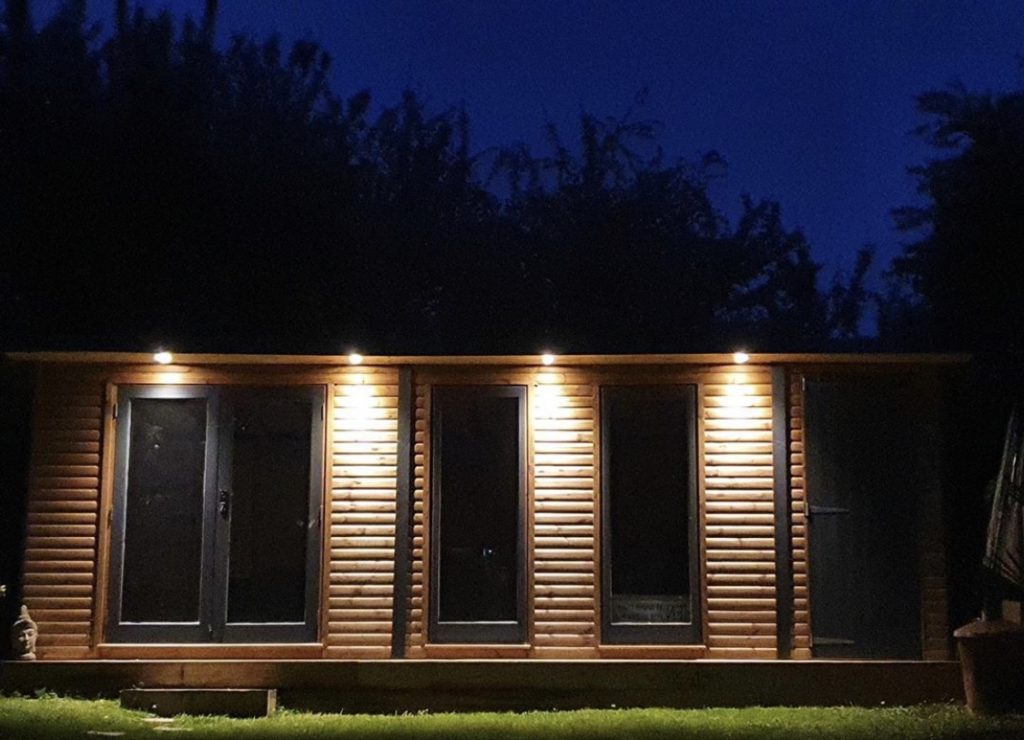
Pictured: @smelectricalservices showcasing our downlights.
Outside lights can transform the entrance to your home. Whilst providing a light and social space in a garden area throughout the seasons. When selecting outside lights for your home you need to pay careful attention to the IP rating to ensure it's suitable for those conditions.
In this blog, we discuss the IP rating of lights and more specifically, what IP rating is required for outside lights.
What IP Rating Means?
IP stands for Ingress Protection or International Protection Ratings. They are defined to the international standard of EN 60529 (British BS EN 60529:1992).
IP rating is used to determine the levels of sealing effectiveness of electrical enclosures against intrusion from foreign bodies such as tools, dirt and moisture.
An IP rating consists of IP followed by two digits. The higher the number the better the protection. Let's take a look at the below IP rating.
IP65: What does the first digit mean?
The first digit indicates the level of protection that it provides against solid foreign objects and dirt. Basically, objects and foreign bodies that could be hazardous if they came into contact with electrical conductors or moving parts, to airborne dirt and dust that could damage circuitry.
IP65: What does the second digit mean?
The second digit represents the protection of the equipment inside the light against various forms of moisture (drips, sprays, submersion etc). This is how well it copes against the external elements of weather.
What IP rating for outside lights?
The higher the IP rating the more protection it provides to external elements such as dirt, foreign bodies and weather. The minimum IP rating you should look for when purchasing outside lights is IP45 and above. Anything between IP45 and IP65 is suitable for outdoor use, with IP65 providing maximum protection against external elements.
IP Rating For Lights Under A Porch
The only exception for outdoor lighting with an IP rating of 66 or less is when your light is positioned outside in covered areas such as porches. In this instance, the light should be rated IP44 or higher.
IP44 rating means that it is protected against solid objects that are bigger than 1mm and water splashing from all directions. It is not suitable for exterior exposed walls.
IP45 and above would typically be considered splash proof. If you are looking for Patio or decking lights, we recommend an IP rating of IP45 or above as these areas are often cleaned by using a power washer.
The below shows an IP rating table of IP45 and above and what they protect from.
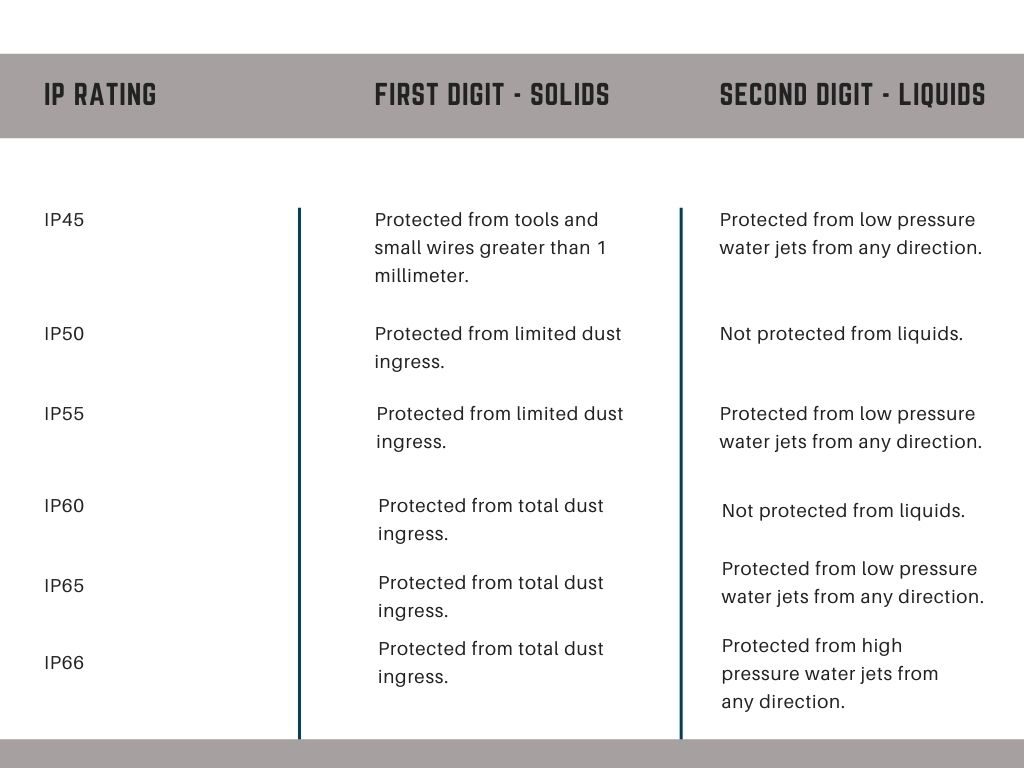
IP66 Rated Outside Lights
We have a wide range of suitably rated lights for outdoor use, whether you're looking for some subtle downlights to light a porch or some wall lights to welcome people into your home.
Our outdoor wall lights all carry a minimum of IP66 rating which are designed to be hard wearing against weather.
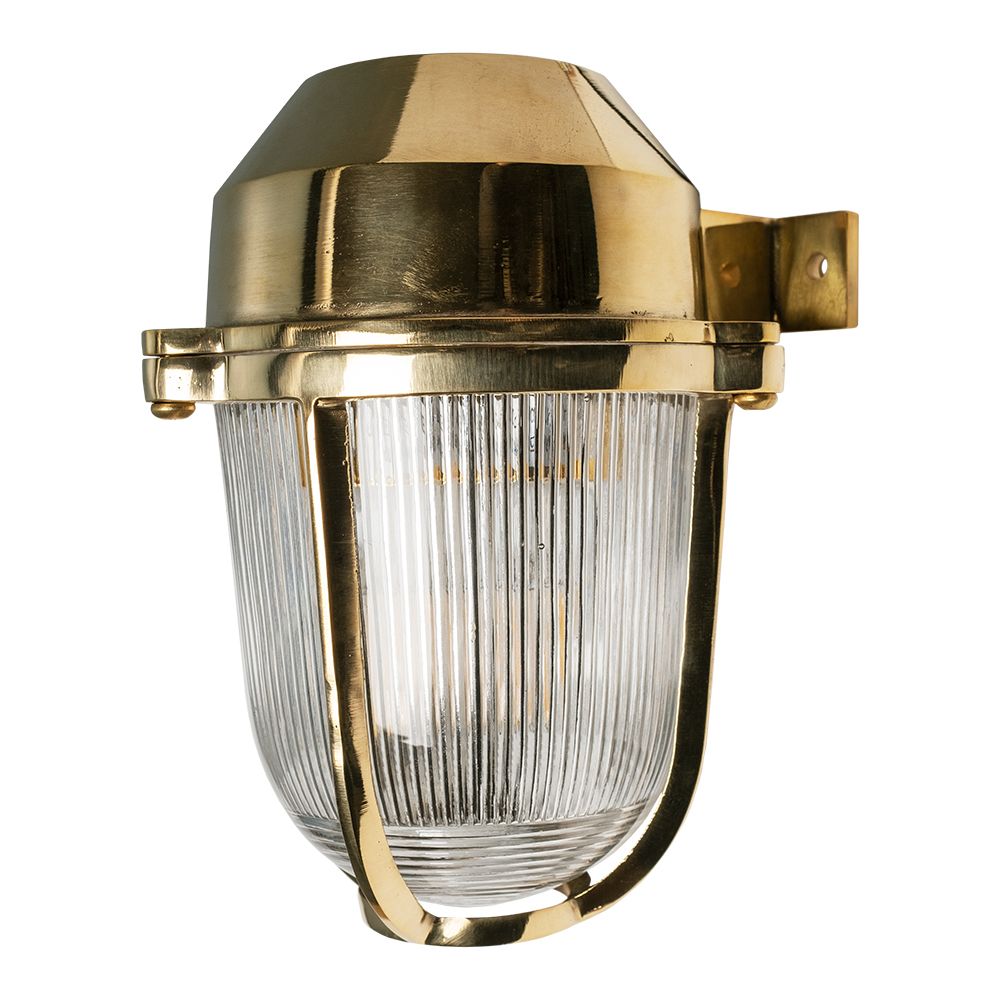
This Hopkin polished brass outdoor wall light is made with real solid brass and rated to IP66, perfect for outdoor use. It has a slightly vintage feel to it which makes it ideal for industrial settings and outdoor space.
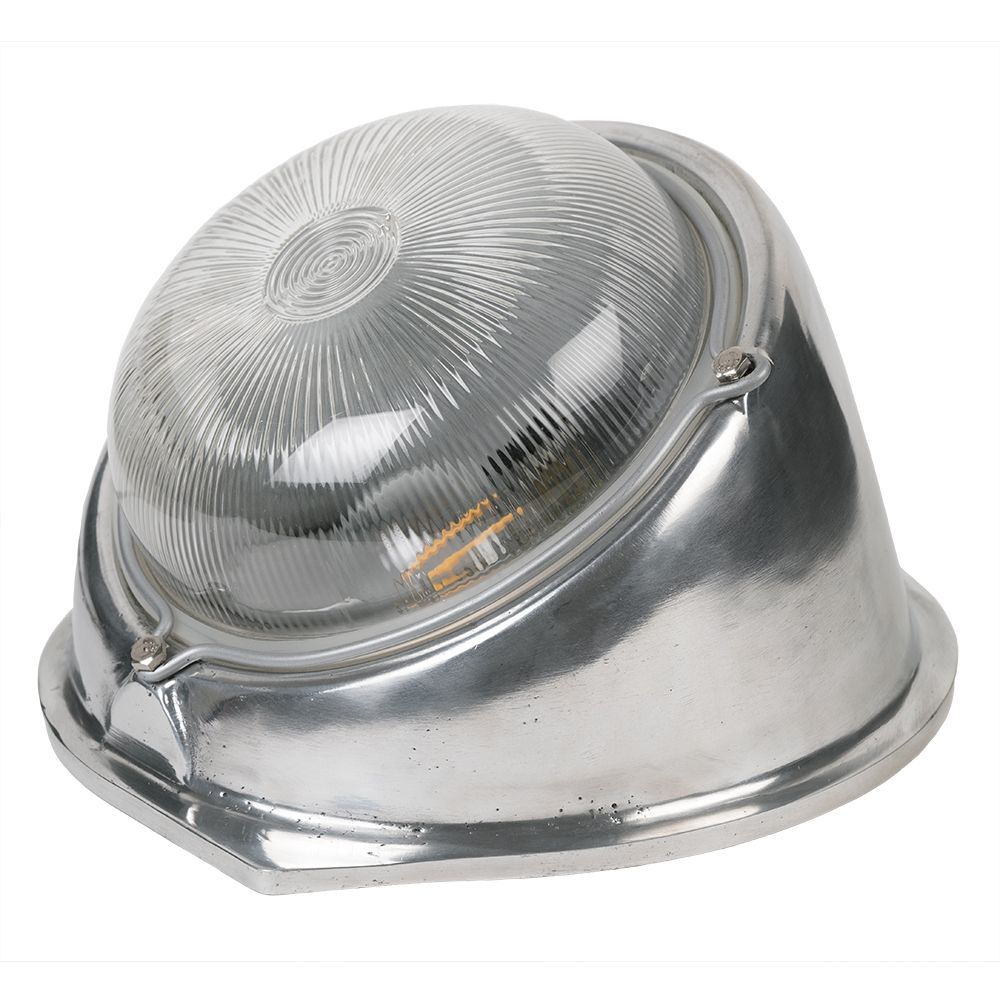
If brass isn't your thing, our Kingly Aluminium wall light is well suited to most outdoor spaces. It carries a sophisticated finish that is timeless, classy and uber-cool.
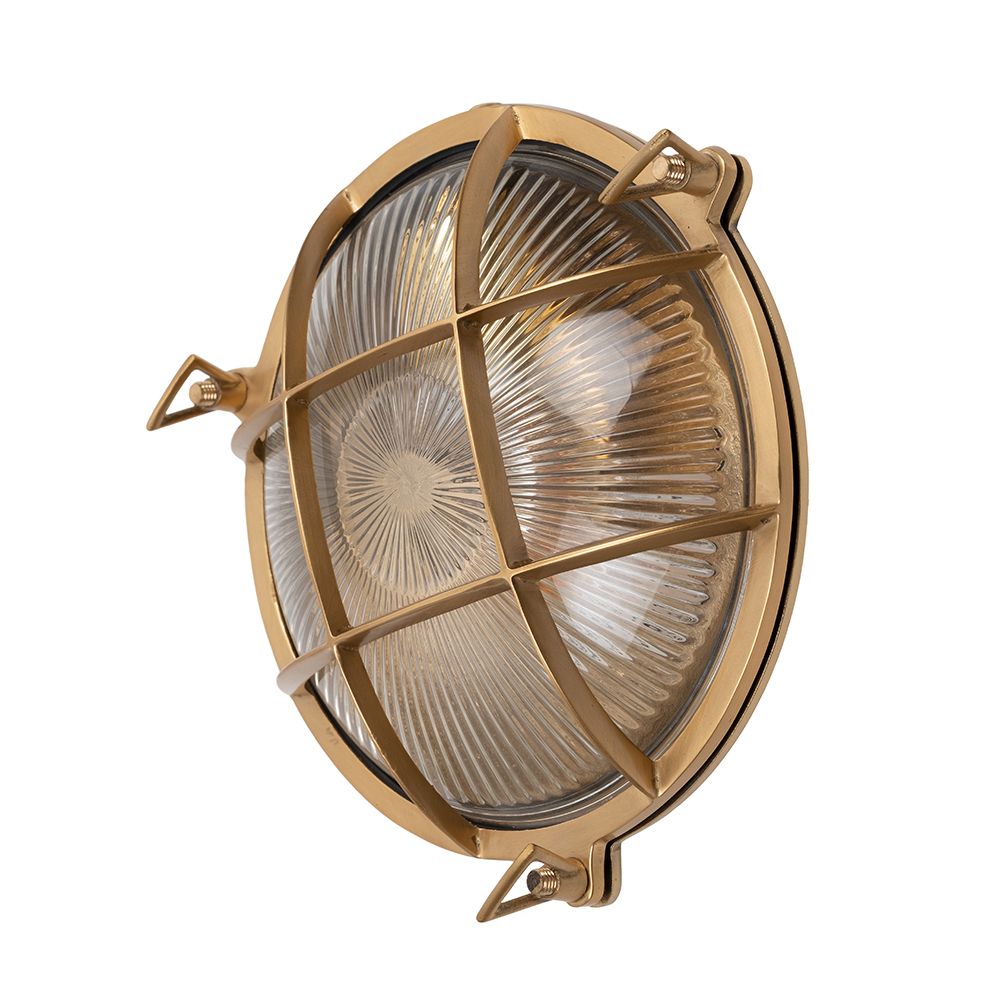
Another fantastic addition to an outdoor space is the Carlisle grid prismatic bulkhead outdoor wall light. With a nautical feel, this light means business. Providing presence and gravitas to your outdoor space.
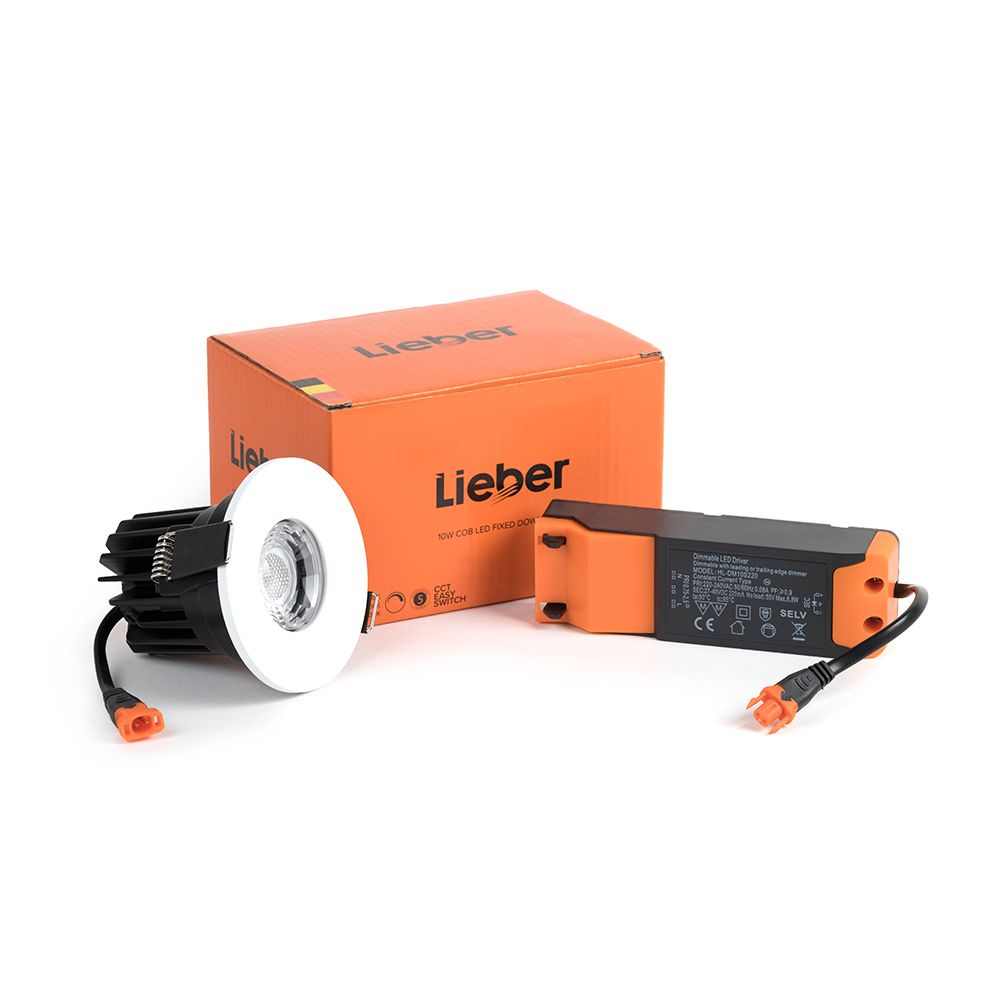
We carry a large range of IP65 rated downlights. Our 10W IP65 rated downlights are suitable for use in Bathrooms (Zone 1) and outdoor use. Downlights are ideal for under lighting on porches or patios, providing a well lit and social area.
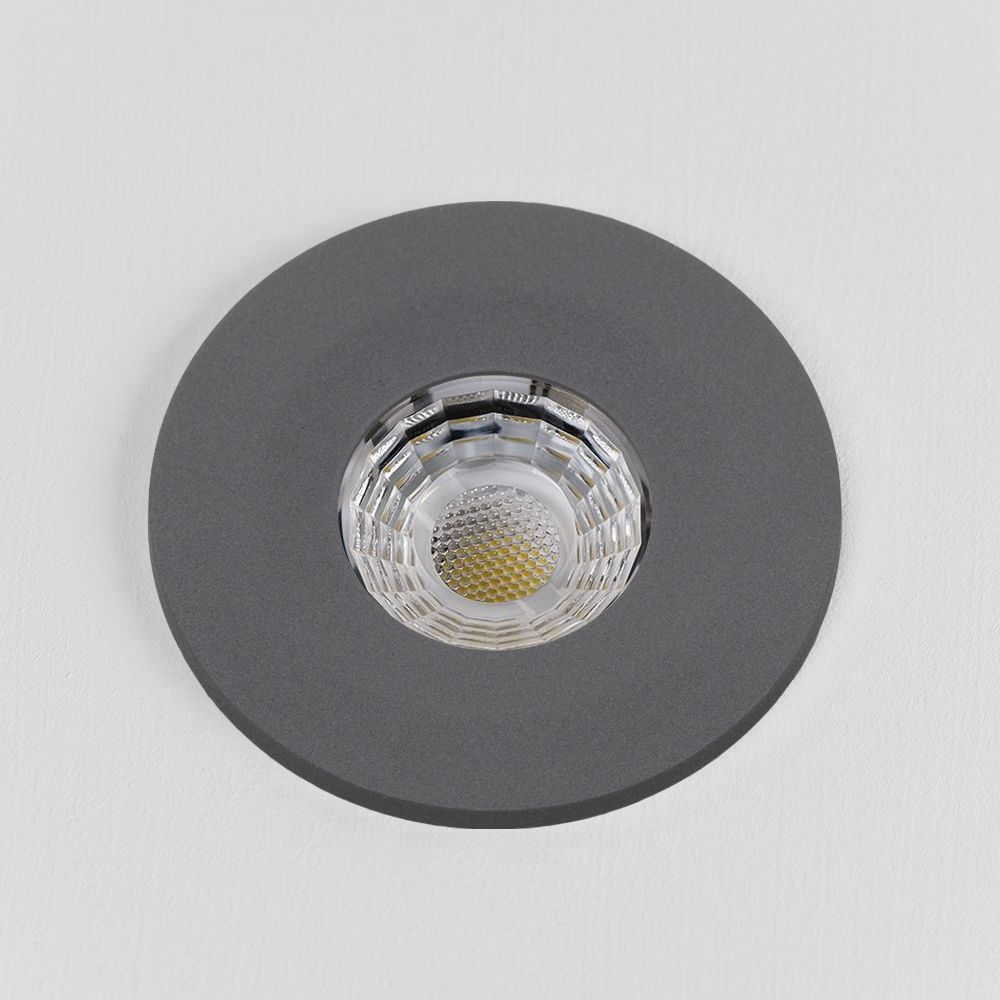
Available in a number of finishes to suit your taste. Graphite Grey is a top seller, lending itself to outdoor use. All downlights are fire rated to 30, 60 and 90 minutes, and robustly built, these strong, safe colour-changing LED graphite grey downlights have 2 sprung clips for easy installation and a quick terminal connector on the driver for easy installation and wiring.
With the winter season closing in, it doesn't mean you need to stay inside. Our range of outdoor lighting can keep you enjoying your outdoor space and fresh air throughout the seasons.
FAQs
Yes, we do a range of spike lights so that you can move them whenever you like, and light any part of your garden where a wall isn't accessible to mount a light.
When selecting outside lights for your home you need to pay careful attention to the IP rating to ensure it’s suitable for those conditions.
A fused connection unit (or FCU) is an electrical outlet with an integrated fuse used for connecting permanently installed appliances such as fridges, dishwashers, and waste disposal units to a circuit. It is essentially equivalent to a fused plug and socket with a cable connected to an appliance, except it is permanently wired into the outlet and the fuses are often easier to change if needed.
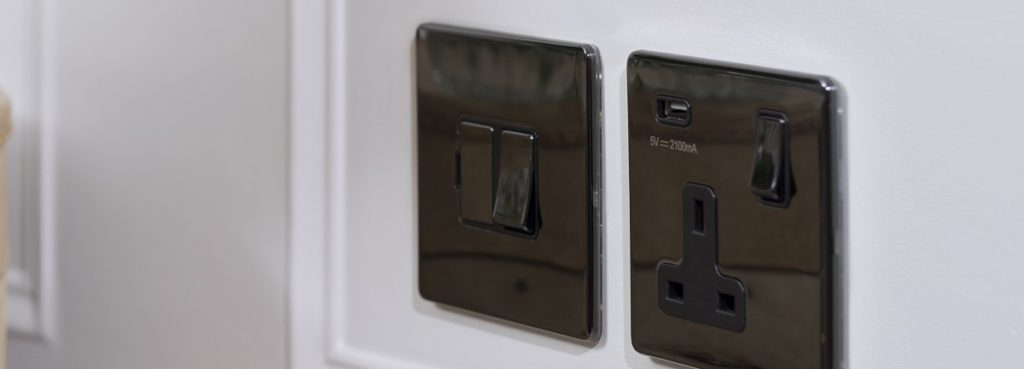
Fused connection units are fitted with a fuse holder in the faceplate, protected by an easy-access cover. They usually take fuses from 3-amp to a 13-amp fuse and can safely run appliances up to a maximum of 3.1kW. Fused connection units can come in switched or unswitched varieties, and some also come with an indicator light.
As FCUs are equivalent to a fused plug and socket, and you can connect them by swapping out a regular plug socket for an FCU (providing it is a 1-gang socket). Alternatively, you can also run it on a separate cable from an existing regular socket on the main circuit, providing an additional level of isolation. FCUs can be completely hard-wired, with the cable to the appliance hidden in the wall, or with a visible cable permanently fitted into the faceplate.
Due to the need to safely de-rate the supply down from 32 amps, FCUs are unique to the UK.
Note: In the interest of safety, you should not undertake any work related to fused connection units, and should only be undertaken by a qualified electrician.
Where are Fused Connection Units Used?
Here are some examples of common uses of fused connection units:
- Integrated kitchen appliances, such as dishwashers, washing machines and fridge freezers
- Low-consumption hobs and ovens
- Cooker hoods
- Extractor fans
- Boilers
- Electric heaters
- Shaver sockets
- Waste disposal units
How does a fuse work?
Fuses in plugs are safety devices which are out in place to protect the lead, rather than the appliance. If too much current goes through them due to an overload or fault, they will blow. This is because they are deliberately made to be a weak link in the circuit. The blown fuse will then cut off the electricity, so the lead and the appliance do not overheat (which can cause a fire).
Types of Fused Connection Unit
There are several different types of fused connection unit, each with their own typical uses and advantages:
Single/Double Pole Fused Connection Unit
FCUs can come in single or double pole variants – the single pole isolating the live wire only, and the double pole isolating both live and neutral wires. The double pole is often used when a higher degree of isolation and safety is required, e.g. for higher-wattage appliances.
Unswitched Fused Connection Unit
This type of FCU only features a fuse holder, with no switch. An unswitched fused connection unit could be used for any appliance that has its own ON/OFF switch, such as a washing machine, or a device that operates continuously and must be difficult to turn off, such as a fire alarm or security lights.
Switched Fused Connection Unit
A switched FCU is an outlet where the cable to an integrated appliance is hard-wired and concealed in the wall (i.e. no plug, socket, or visible cable). It contains a fuse holder and a switch, allowing the unit to be turned on and off. This would typically be used for integrated kitchen appliances that do not have their own ON/OFF switch, e.g. a fridge freezer, which might require turning off for defrosting.
Fused Connection Unit with Flex Outlet
An FCU with a flex outlet is a wall outlet which has a flexible cable permanently wired into the faceplate, instead of being hard-wired into the wall. This might be used for appliances which may not normally be permanently integrated, but which may still require a safe means of isolation, such as an electric radiator or a hair dryer.
Replacing Fuses in an FCU
Fused connection units are fitted with a fuse holder in the faceplate, protected by an easy-access cover that allows fuses to be easily changed when needed.
Before replacing a fuse, it is essential that the issue that caused the fuse to blow is identified and corrected. Different types of fuse are required depending on the power consumption of the appliance, so if you need to change a fuse, it must only be replaced with another of the appropriate rating:
- Appliances rated at around 700W or below should be fitted with a 3-amp fuse.
- Appliances rated from around 700W to around 3000W require a 13-amp fuse.
In the UK, plug fuse ratings have now been standardised to either 3 amps or 13 amps. However, some older appliances still take a 5-amp fuse, which are still available for purchase. When replacing a fuse be sure to check the manufacturer’s specification.
[related_products is_auto_added="1"]A fused connection unit (or FCU) is an electrical outlet with an integrated fuse used for connecting permanently installed appliances such as fridges, dishwashers, and waste disposal units to a circuit. It is essentially equivalent to a fused plug and socket with a cable connected to an appliance, except it is permanently wired into the […]
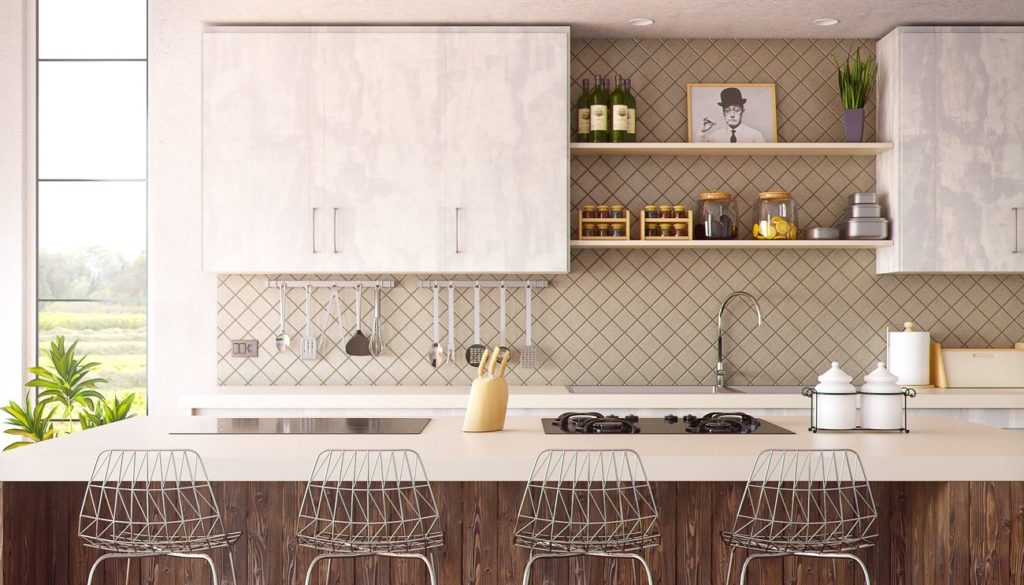
When planning your kitchen layout, getting the right set up for the functionality you require is so important. Whilst having too many sockets and switches in the room will look strange, not having enough outlets can cause problems. There’s nothing worse than needing to plug in two appliances on a work top, but only having one socket.
If you are planning a home renovation, or re-doing your kitchen, now is the time to think about which outlets you require, how many of them and where they need to go. You don’t need to be too concerned with the finish just yet.
Create a Diagram
On your floor plans, indicate where you need power sockets in your kitchen. Think about the worktops, and what you are likely to be doing on them. If you are likely to use appliances like blenders, be sure to plan in enough outlets.
If you can, use double sockets, to give yourself more options, and look to have at least one socket, every 2-3 metres along the wall.
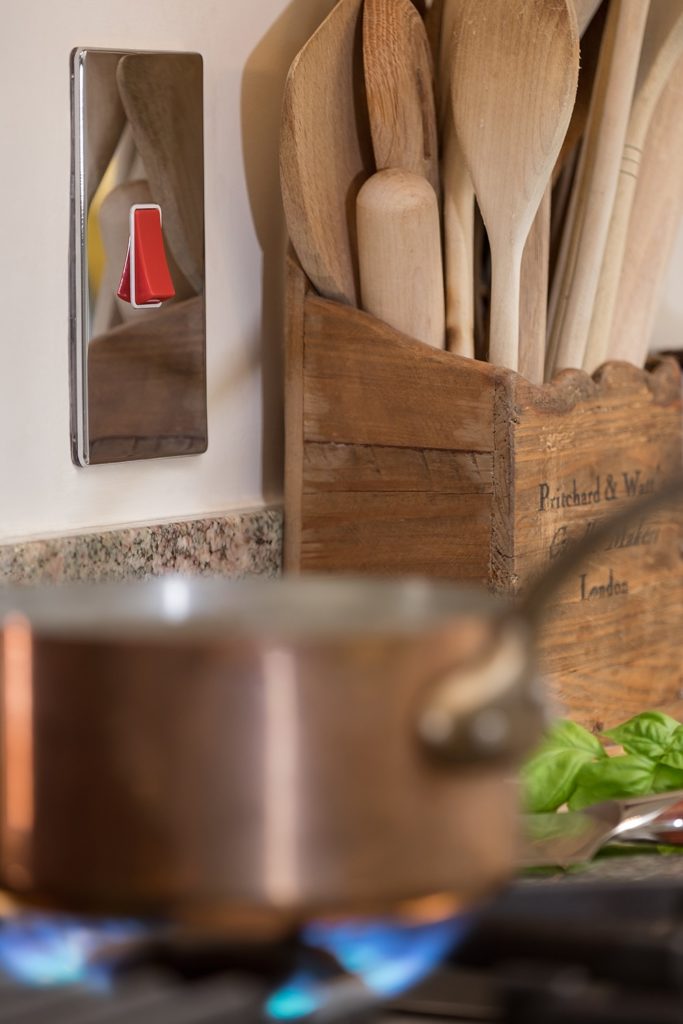
Be sure to include sockets for ovens, fridges, washing machines and other larger appliances. These will need double pole sockets, double pole switches and may require a switched fused connection unit. Ovens sometimes need to be hardwired into the wall using a flex outlet, but this is not always the case.
Some cookers need a 45A switch at the wall, however cooker control units offer a 45A switch for the oven as well as a plug socket for appliances, without taking up too much space.
If you have a social space in your kitchen, for example a table, kitchen island or a breakfast bar, consider adding a socket nearby for laptops and phones. You may even want to add in a USB socket for quick and easy charging.
What height should the sockets be?
Generally, it’s good to install sockets that are at the worktops, about 10-15cm above the surface. If you have a kitchen/diner with a table and want to have an outlet for easy access for chargers and laptops, position it 45cm above the floor.
For large appliances like fridges and dishwashers, the height depends on the size of the space and size of the appliance. Your kitchen fitter may need to see the space to advise you.
Which sockets and switches do I need in the kitchen?
This depends really on the individual kitchen, but here are a few important ones:
- Light switches: You’ll need switches to control all of the lights in the room. These are likely to be 2-way switches.
- Worktop sockets: place a 13A socket every 2-3 metres.
- Appliance sockets: Behind every major appliance. (Some method of isolation is needed.)
- Cooker switches: You’ll need a 45A switch. Consider using a cooker control unit.
- Appliance switches: You’ll need double pole switches for appliances like washing machines.
If you are renovating your kitchen, now is the time to think about which outlets you require, how many of them you need and where they need to go.
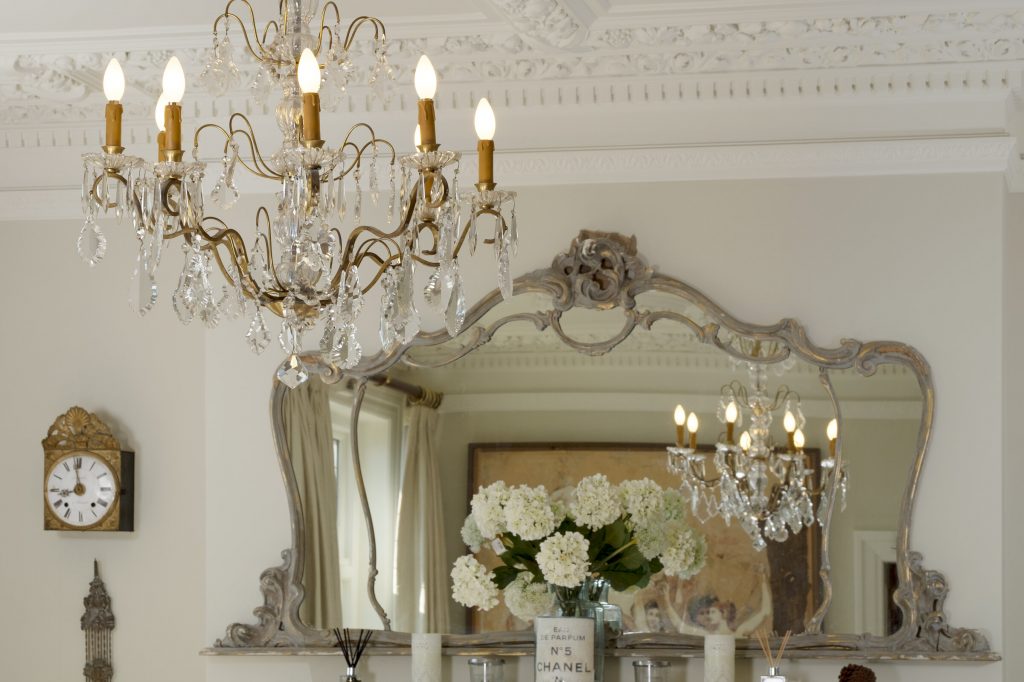
With the darker nights drawing in, the endless light evenings that required minimal lighting are sadly over. It's a time to reflect on your current lighting strategy in your living room to create a cosy, warming and most importantly well lit room for relaxing, eating or working.
There are many different options for how you choose to light your living room. This can depend on individual requirements and how your room is used. We talk you through our living room lighting guide to help you select the right lighting for your living room.
There may be occasions where you want to light a living room with no overhead lighting. This might particularly be the case if you have a beautiful ceiling that you don't want to encroach onto.
Whilst it's not the traditional way to light a living room. This does provide an opportunity to be creative with different forms of lighting.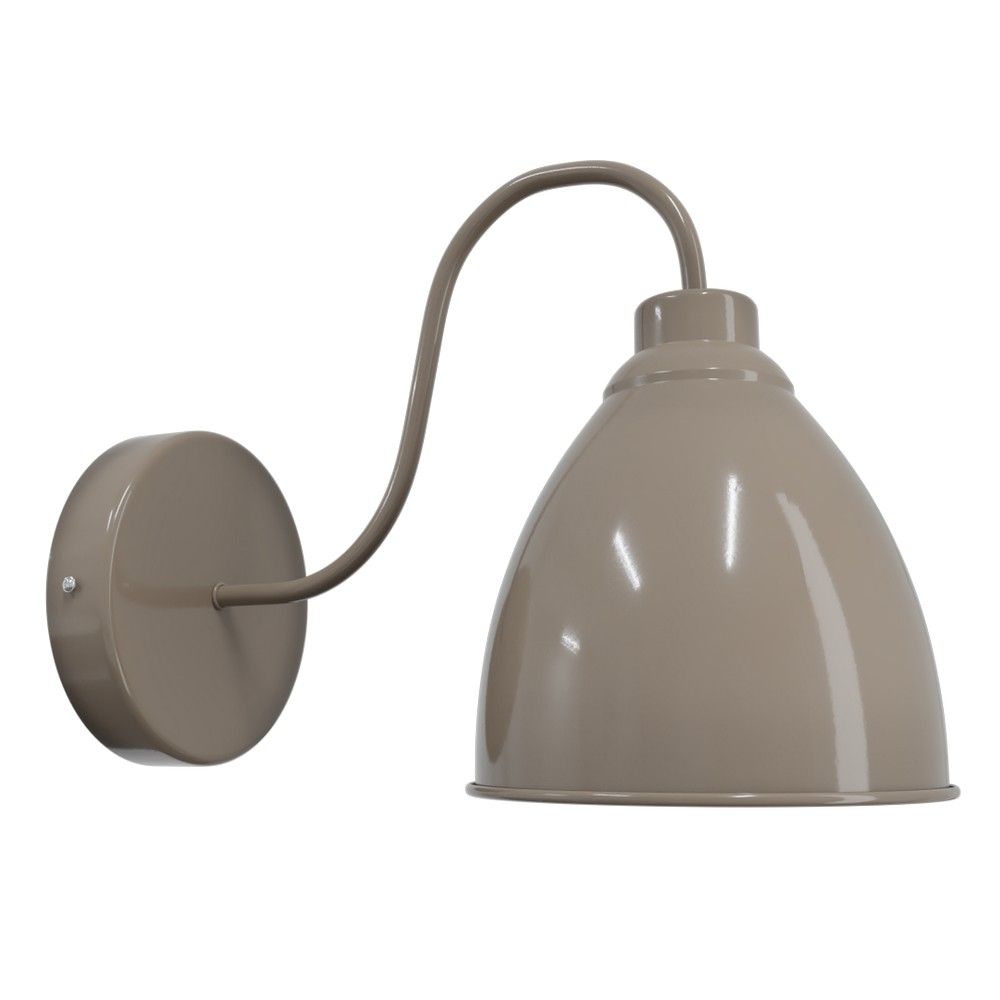
One form of lighting is likely to not be enough, especially on those dark mornings. Layering lighting is key when not using overhead lighting.
A floor lamp is a fantastic way to get a lot of targeted light onto one area. Perfect for task lighting, this is ideal for reading nooks or layering with additional lighting to light the entire room.
Wall lights are a match made in heaven with floor lamps. They provide better distributed light while a floor lamp can brighten the areas that need it most.
Another inexpensive way to light your living room without the use of overhead lighting is table lamps. They provide effective light sources, and strategically placed they can provide an adequate amount of light without the need for overhead lighting.
Layering Lighting
As touched on above, layering lighting is a great way to achieve the desired level of lighting through the use of different lights.
For it to work effectively in your living room, you need to find the right balance between downlights, pendant lights, floor lamps and wall lights.
Once you understand the three different types of lighting, task lighting, accent and ambient lighting you can work around your requirements and layer accordingly.
To effectively layer your lighting, keep these key considerations in mind;
- Use plenty of floor lamps, they give you additional flexibility on where you want your lighting to be placed.
- Remember that ambient lighting doesn't have to come from overhead lighting alone. Wall lights, floor lamps and table lamps can all contribute to it.
- Don't forget natural lighting comes into play too! Especially if you have large bay windows or street lighting near to your windows.
Ambient Lighting
Adding some ambient lighting to your living room setup can help to set the overall mood for the room. This can be achieved in a number of different ways.
Ambient lights most commonly hang from the ceiling. This could include pendant lights or chandeliers, among others which help to create a rooms ambient lighting.
Using a dimmer switch for ambient lighting gives you control over lowering the brightness of your lights. This is particularly useful as the role of your room changes as the day goes on.
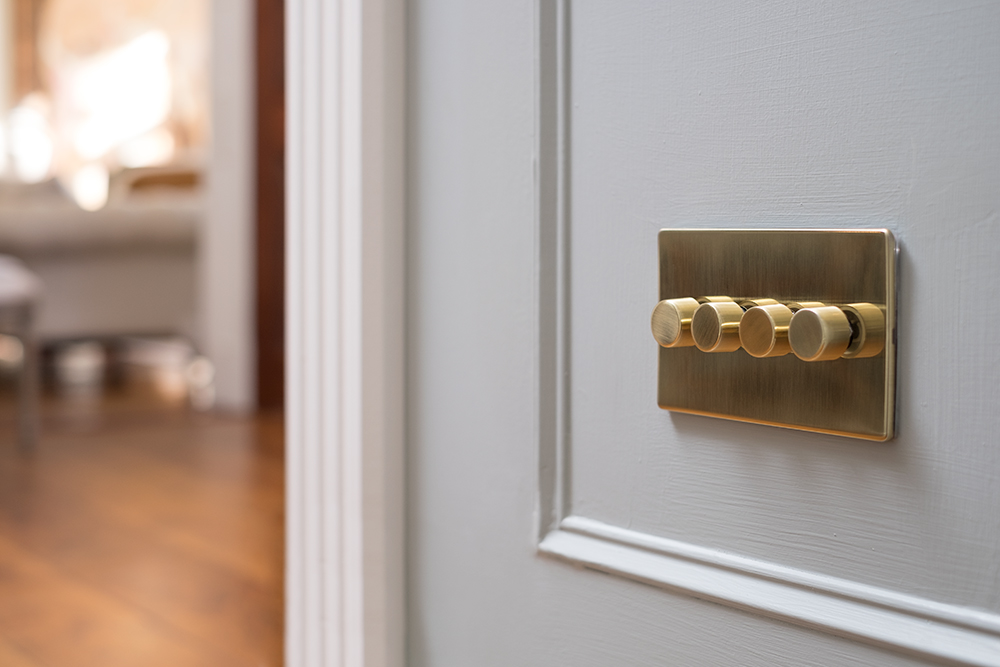
Colour Temperature
The colour temperature of your bulbs is another important consideration to have when creating the lighting plan in your room.
The colour temperature describes the appearance of the light. Colour temperature is measured in degrees Kelvin on a scale from 1000 to 10000.
It's dependent on your personal preferences for your living room, but generally speaking a colour temperature of 1800K which is sunset white is perfect for living rooms. This emits a vintage style light which is beautiful and warm. This colour works well in a living room as it can help to create ambience and warmth.
A slightly cooler, but still warm colour temperature is 3000K which is a warm white light. The warm inviting glow it creates makes it perfect for a living space. However, if your living room is a place you work in quite regularly you might want to opt for something closer to daylight.
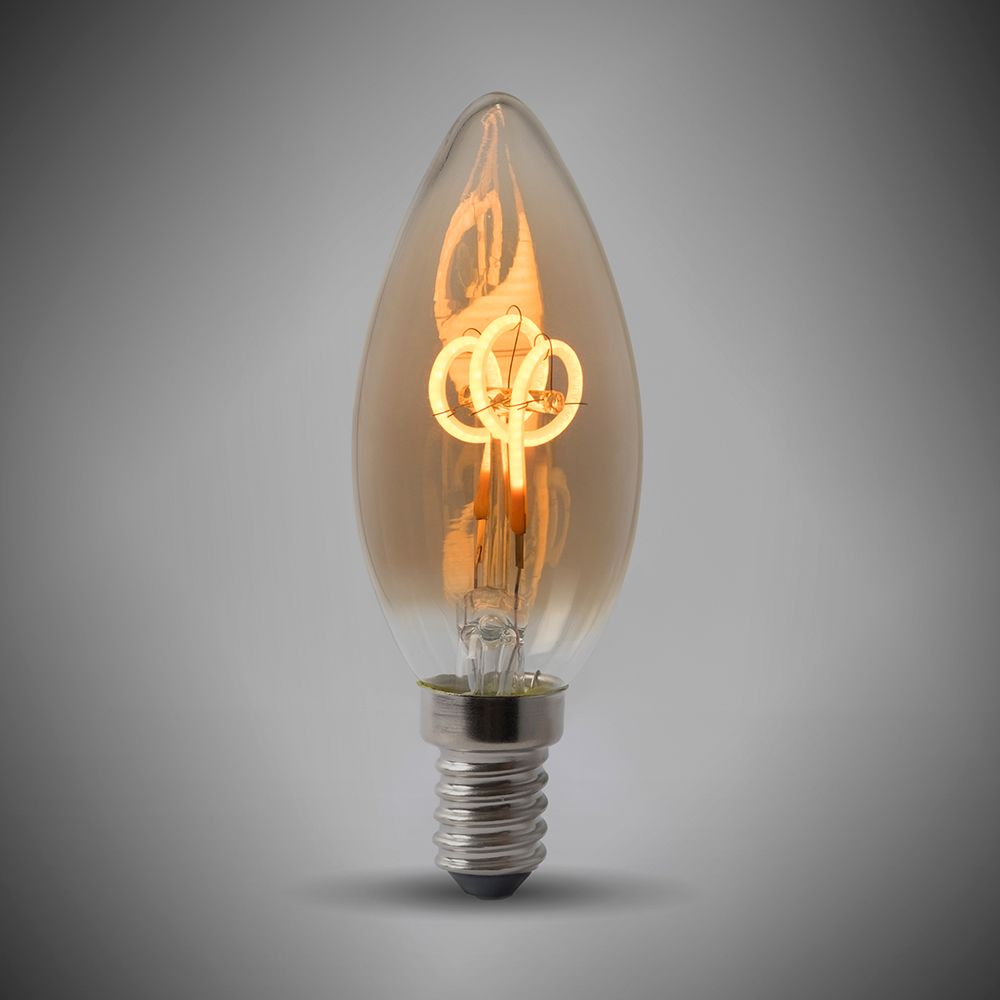
The living room is one that can adapt and change as the day goes on, so it needs a careful lighting strategy that can help you go from work to relaxing if required.
[related_products is_auto_added="1"]We talk you through a living room lighting guide to help you select the right lighting for your living room. From no overhead lighting to layering lighting.
When renovating or decorating your home, the details can really add to or detract from the overall look. A period feature in a contemporary setting can stick out like a sore thumb, and a contemporary feature in a period or vintage setting can do the same.
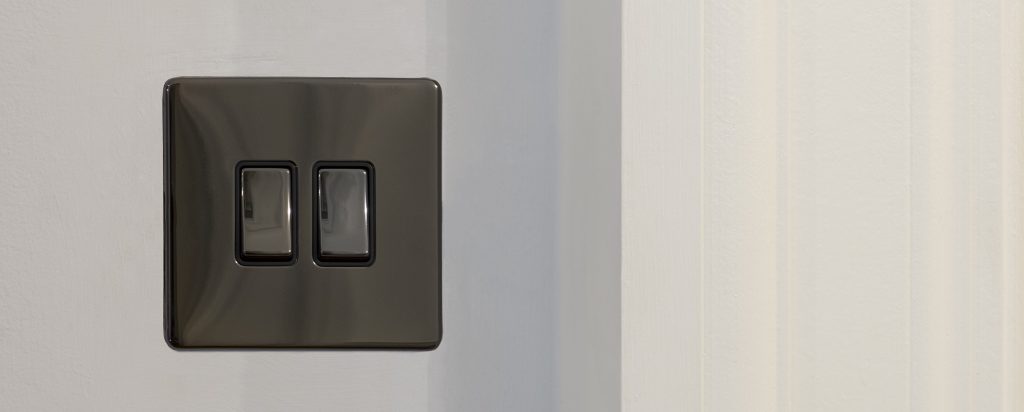
Sockets and switches are a common feature throughout properties, and often appear in very visible places, so if the plan is to have a consistent style throughout the room, then the faceplates need to match the décor style.
What is contemporary décor?
Contemporary décor styles tend to not only suit homes but also commercial spaces like offices too. As a style, it is defined by simplicity, clean lines and subtle sophistication. These interiors often focus around the space, rather than particular focal points (statues etc.)
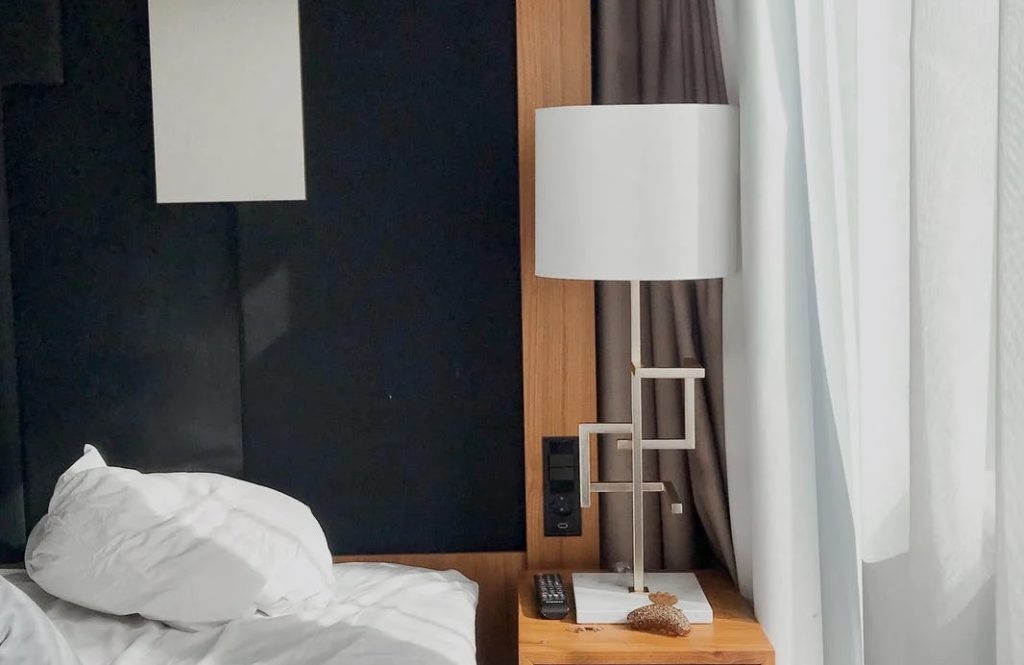
Neutral colours are the most common colours in contemporary design. Mainly blacks and whites. Strong visible lines are key to creating a contemporary look. These lines don’t necessarily need to be straight, as curves can be used, but they need to be strong and clear. Lines can be found in the architectural detailing, colour blocks and wall art.
What sort of socket and switch finish suits contemporary properties?
When looking at contemporary sockets and switch finishes and styles, consider the characteristics, compared to the characteristics of contemporary décor.
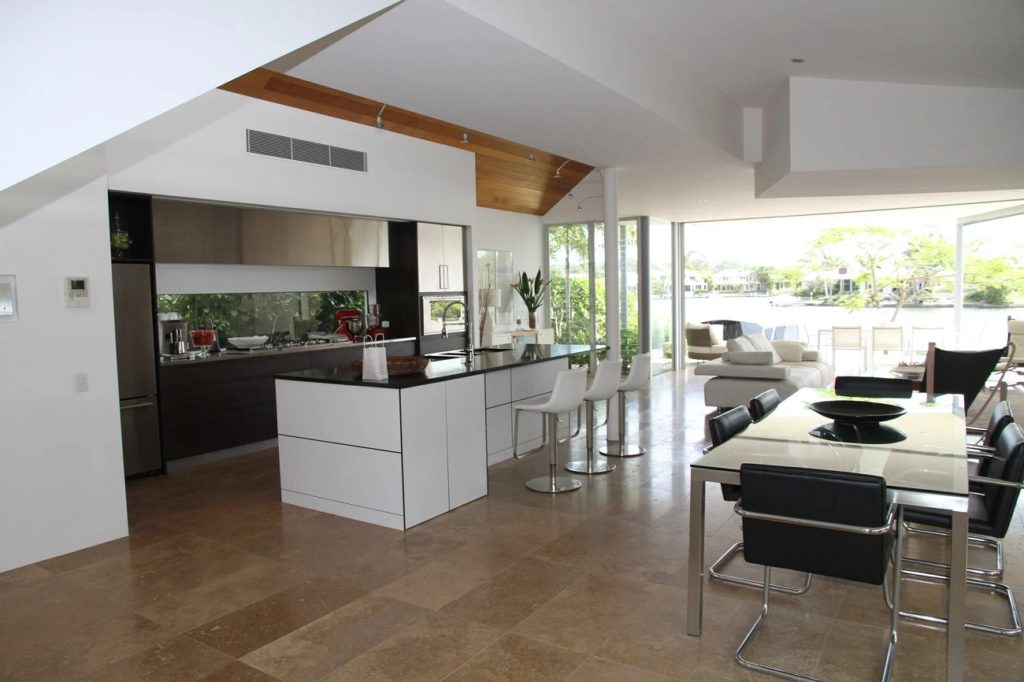
Neutral colours are blacks and whites, so you may want to choose either a white metal or a black metal finish. If you have mainly white features and appliances, and lighter colours then white is likely to be a safer bet, but if you have slick, shiny black appliances or a large black television, then a reflective, yet deep coloured Black Nickel finish is likely to complement its surroundings.
Brushed Chrome is also a versatile finish, which can work well for contemporary sockets. This is one to consider. Polished Chrome may fit in, but this tends to work well with more of a vintage or art deco style.
What sort of socket and switch plate style suits contemporary properties?
Whilst there are plenty of different plate designs on the market, the two key options are traditional (raised) plate and flat plate. Flat plate does tend to fit in with a contemporary style much better, however traditional plate can work too. Flat plate only suits walls that are completely flat, however flat walls tend to be common in ultra-modern and contemporary properties.
The other options for plate types are screwed or screwless. Screwed sockets are sockets that have the screws visible at the front, and screwless have concealed fixings so have a completely flat front.
What sort of switch type suits contemporary properties?
Our article Rocker Switch Vs Toggle Switch covers the differences between rocker and toggle switches. Appearance-wise the three main types are rocker, toggle and dimmer switches. Toggle switches tend to suit period properties, however a toggle switch in white metal or black nickel can still look contemporary, but offers a unique twist.
[related_products is_auto_added="1"]When renovating or decorating your home, the details can really add to or detract from the overall look. A period feature in a contemporary setting can stick out like a sore thumb, and a contemporary feature in a period or vintage setting can do the same. Sockets and switches are a common feature throughout properties, […]
Incandescent light bulbs are currently being phased out, with more energy efficient alternatives becoming the norm. There are still a number of options available though including CFL, LED and Halogen, so when choosing a bulb, it is useful to know which type is most suitable for your needs.
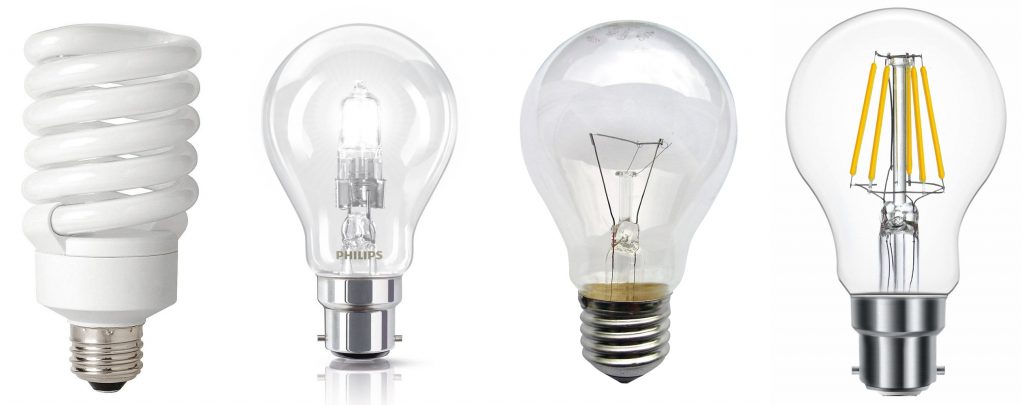
The type of bulb is not the only consideration you need to take into account. You also need to think about the cap size, the bulb shape, the lumens and the colour temperature. You can read more in our bulb buying guide. In this article however, we will look specifically at incandescent, halogen, CFL and LED bulbs and their pros and cons.
What are incandescent bulbs?
Incandescent light bulbs are the classic light bulbs that have been used in homes for years. The light comes from the heating up of a wire filament in the centre. Electrical current is supplied to the wire, and as it heats, it glows.
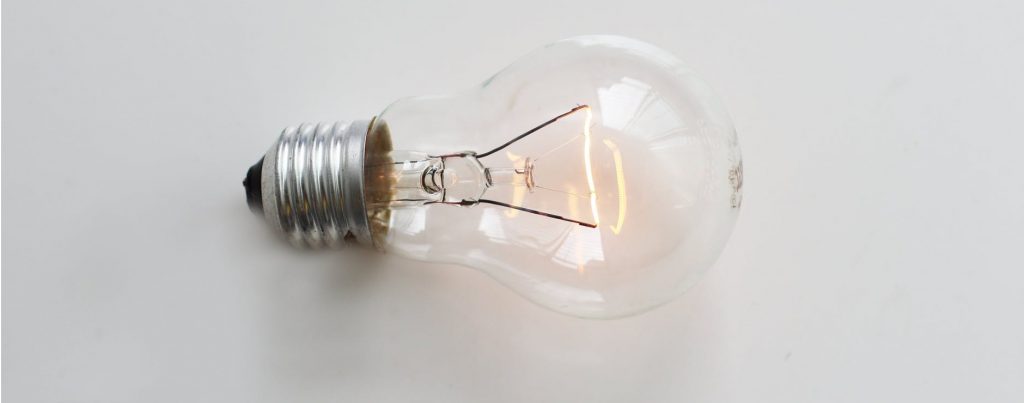
Whilst they offer a traditional look, incandescent bulbs are inefficient. Less than 5% of the energy they use it converted into visible light. The remaining energy is lost as heat, hence why these are often hot when they have been switched on for some time.
What are CFL light bulbs?
CFL stands for compact florescent lamp, and these light bulbs are one of the more common types of energy saving bulbs. They typically use less energy than incandescent and were the first widely available energy-saving alternative bulbs on the market.
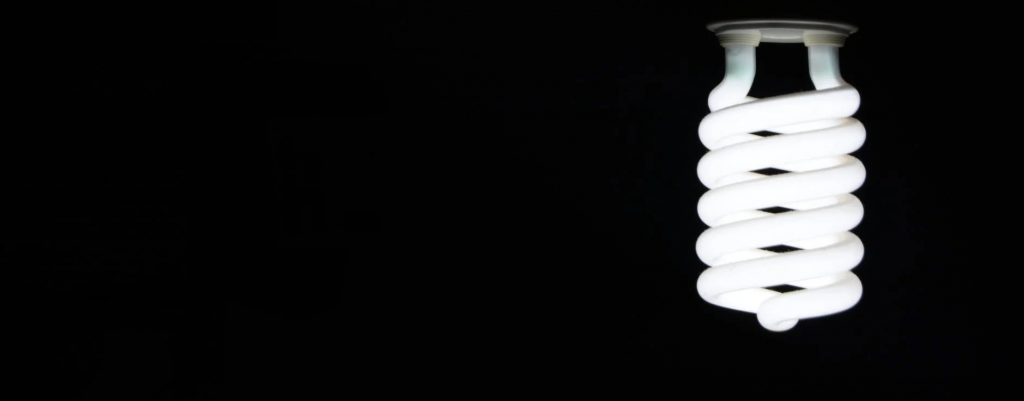
These light bulbs use an electric current to excite gases within a bulb, causing a phosphorous coating on the inside of the glass to glow. The efficiency of these bulbs is due to less of the energy being expended on heat.
CFL light bulbs typically use between 60% and 80% less energy than incandescent bulbs.
What are halogen bulbs?
Halogen bulbs are made like incandescent bulbs but consist of a tungsten filament, sealed into a compact glass casing that contains a mixture of inert gas and a halogen (this could be iodine or bromine). These operate at a higher temperature and produce a light with higher lumens than a like for like incandescent.
Halogen bulbs typically use 20-30% less energy than incandescent bulbs.
What are LED light bulbs?
LED bulbs produce light with one or more light emitting diodes. These diodes work with direct current (DC) electrical power, so the bulbs contain a driver that converts the commonly used alternating current (AC) to the current used by the LEDs.
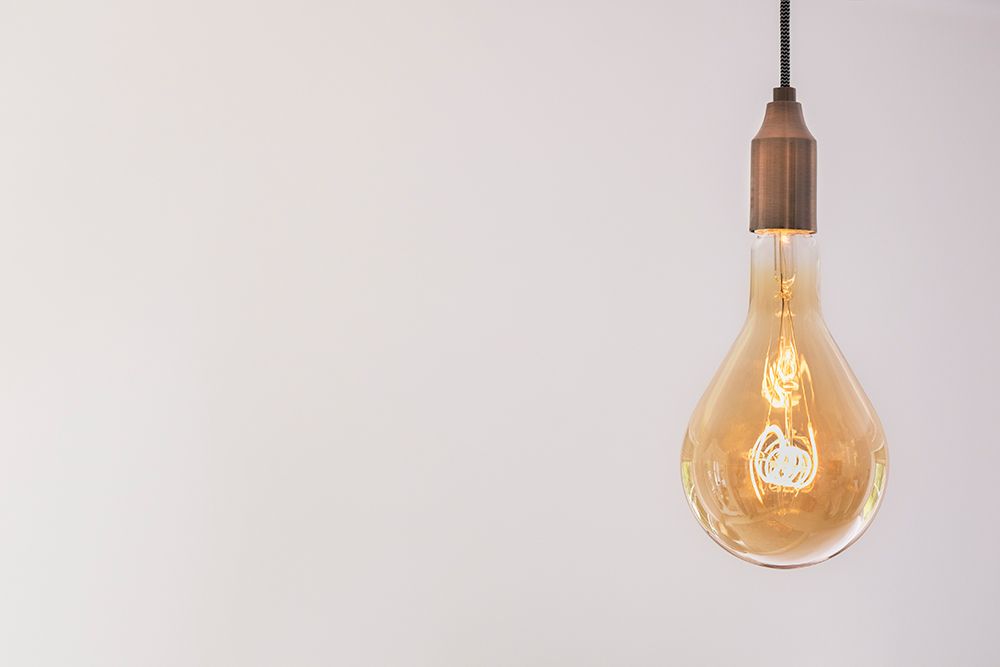
These are currently the most efficient, commonly available option on the market and typically use 90% less energy than incandescent bulbs.
LED vs Incandescent
The main benefits of LED bulbs compared to incandescent bulbs focus on energy efficiency, cost to run, longevity and environmental impact. As previously mentioned, LED bulbs typically use 90% less energy than incandescent bulbs and can turn 70% of their energy into light. The energy efficiency of LED makes them far better for the environment, as less energy needs to be produced to power them.
Whilst incandescent bulbs were often cheaper than LED bulbs, this is changing as LED technology becomes more and more common, and the overall cost, when taking into account the energy costs over the lifetime of LEDs compared to the energy costs of incandescent bulbs makes LED far more cost effective.
Incandescent bulbs have a far shorter lifespan than LED bulbs, so whilst the one purchase of an incandescent may be cheaper, LEDs will not need to be replaced so often.
LED Vs CFL
CFL bulbs were widely available before LEDs really took off, but LEDs have now covered all bases. With more attractive designs of LED bulbs, they look far better than CFL bulbs and CFLs contain a small amount of mercury, so need to be recycled or disposed of properly and handled carefully. This isn’t an issue with LED bulbs.
Perhaps the most common complaint about CFL bulbs is that they take some time to reach full brightness, so when you first switch them on, they can appear dim. This again is not an issue with LED bulbs.
LED vs Halogen
Halogen bulbs are technically a form of incandescent lighting and are far less efficient than LED bulbs, but are, as mentioned earlier 20% to 30% more efficient than traditional incandescent bulbs.
Halogens offer the look of a traditional bulb, and are often marketed as eco alternatives to incandescent bulbs but a no match compared to the energy efficiency and longevity of LEDs.
Incandescent vs CFL vs LED vs Halogen
Incandescent bulbs are less efficient than other types of lighting, with just 5% of their energy used converted into visible light. They typically have a luminous efficacy for 120V operation is 16 lumens per watt, compared to 60 lm/W for a compact fluorescent bulb or 150 lm/W for some white LED bulbs.
Whilst halogen downlights can be initially cheaper, the ongoing cost savings in the form of energy saving makes LED downlights a far more cost-effective option.
The cost of running a light bulb varies on the bulb type. LED bulbs are cheaper to run than CFL, incandescent and halogen. On average 15W LED bulb costs around £0.002 per hour to run, a 20W CFL bulb costs round £0.003 per hour, a 70W halogen bulb costs around £0.008 per hour and a 100W incandescent bulb costs around £0.012 per hour.
If you have had issues with LED bulbs burning out, it could be one of a number of reasons. You may be trying to dim non dimmable LED bulbs (not all LED bulbs are dimmable), or you could be using dimmable LED bulbs with a non-LED compatible dimmer. In this case, switch to using a trailing edge dimmer switch.
If you find yourself burning through multiple LED bulbs quickly, the mains in your house might be too high. In UK homes, the electricity should fluctuate around 230V at 50 Hz. If this is the problem, you should contact an electrician to test, and your electrical provider to correct the issue.
LEDs can sometimes overheat if used with a fixture that isn't LED compatible. This can cause them to burn out. If none of these reasons are the cause, then you could have used a bad batch of LED bulbs. In which case, contact the manufacturer.
Incandescent light bulbs are currently being phased out, with more energy efficient alternatives becoming the norm. There are still a number of options available though including CFL, LED and Halogen, so when choosing a bulb, it is useful to know which type is most suitable for your needs. The type of bulb is not the […]

Copper, brass and bronze are all popular metal finishes in interior design. They all offer a warmth and a distinct style in their own way. They are often used for features around the home like door handles, lighting, sockets and switches and can really add to the overall appearance of their surroundings.
Whilst the differences between them are quite clear when they are all displayed next to each other, it can sometimes be difficult to choose which one is best for a particular interior design project, so in this article we will look at each metal, what it looks like and when you might prefer to use it.
What is Copper?
This is a beautiful and popular metal finish that works well in both classic and modern décor styles. Whilst it looks similar in may ways to rose gold and can be used in similar surroundings, there are slight differences in the colour. To find out more, read our guide: Rose Gold Vs Copper.
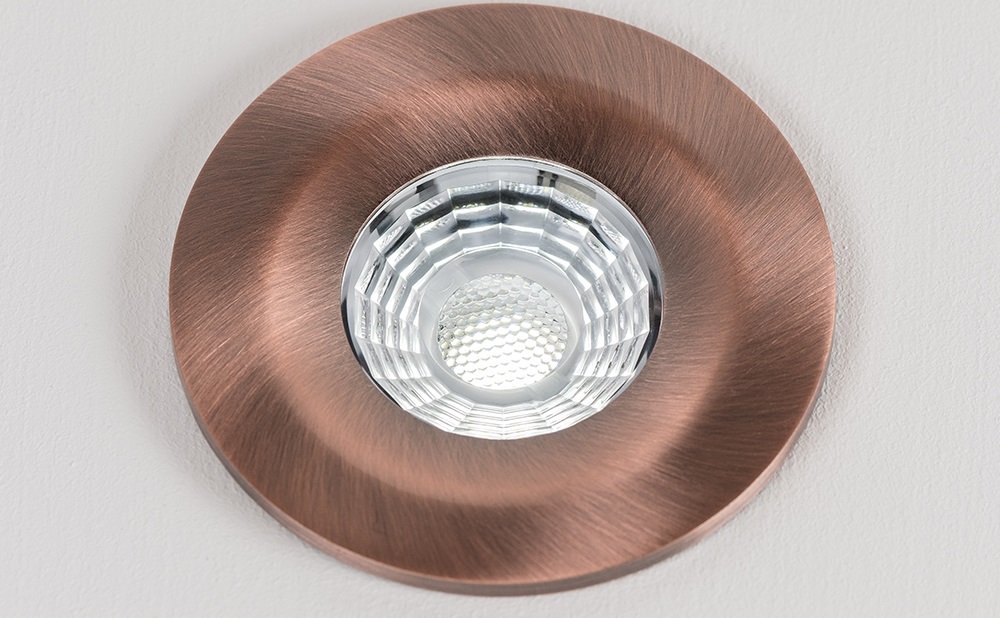
This is a common finish for sockets and switches, lighting and even pots, pans and kettles. Copper has appeared in many kitchens recently and can really shine (literally and metaphorically) in a Victorian home.
Copper is an element, as opposed to an alloy and has a pinkish – orangey colour. It works well with pastille colours like blues, greens and a soft turquoise, but equally complements white, black and grey. As a natural metal, it looks beautiful with grey stone worktops.
What is Bronze?
Bronze is a beautiful a metal alloy made up of copper and tin, but often with other elements such as aluminium, manganese, silicon or phosphorus. It tends to be darker than copper, but still carries the red-ish colour.
Again, this is popular as a finish for socket and switches but has a much more classic and period look to it. This can really add a touch of class to a room, and doesn’t overbear. Bronze can surprisingly go together really well with brass.
Bronze goes well with white, but also fuchsia, teal and black.
What is Brass?
Brass is commonly available in a number of finishes including antique brass, brushed brass, satin brass and polished brass. Each of them offer a different shade, and a different feel, however brass as a whole tends to suit period properties.
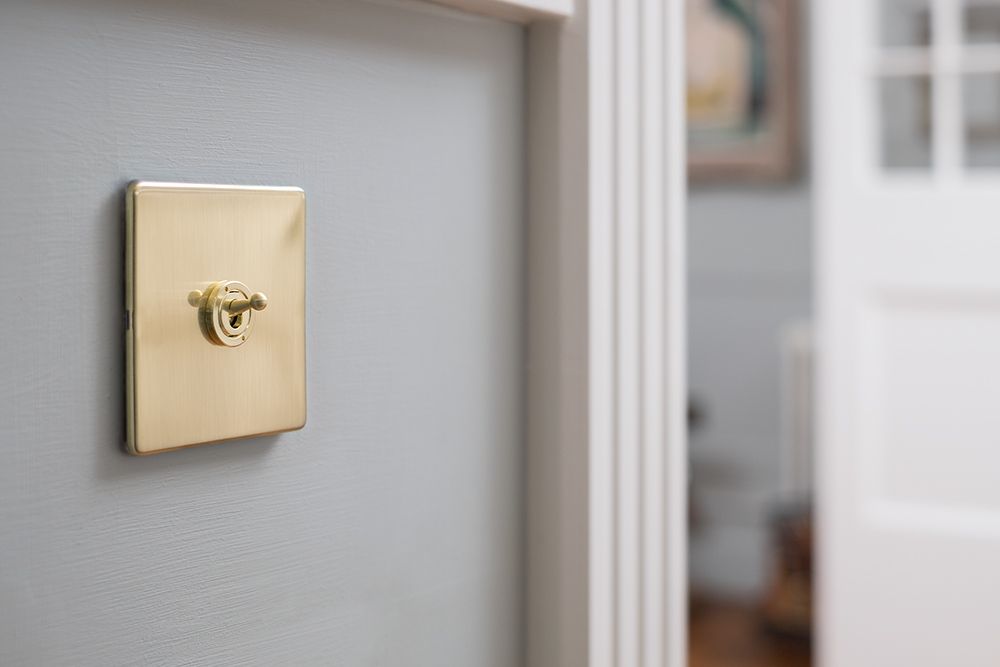
With a muted yellow colour, brass often looks similar to gold, but with a dulled, muted yellow tone. Much like bronze, this is an alloy that includes copper. But unlike bronze, this is made up of both copper and zinc.
Brass works particularly well with pastille blues and greens, but also black and white.
All three of these beautiful finishes can add a real warmth and character to a room when used to accentuate the overall décor.
[related_products is_auto_added="1"]Copper, brass and bronze are all popular metal finishes in interior design. They all offer a warmth and a distinct style in their own way. They are often used for features around the home like door handles, lighting, sockets and switches and can really add to the overall appearance of their surroundings. Whilst the differences […]
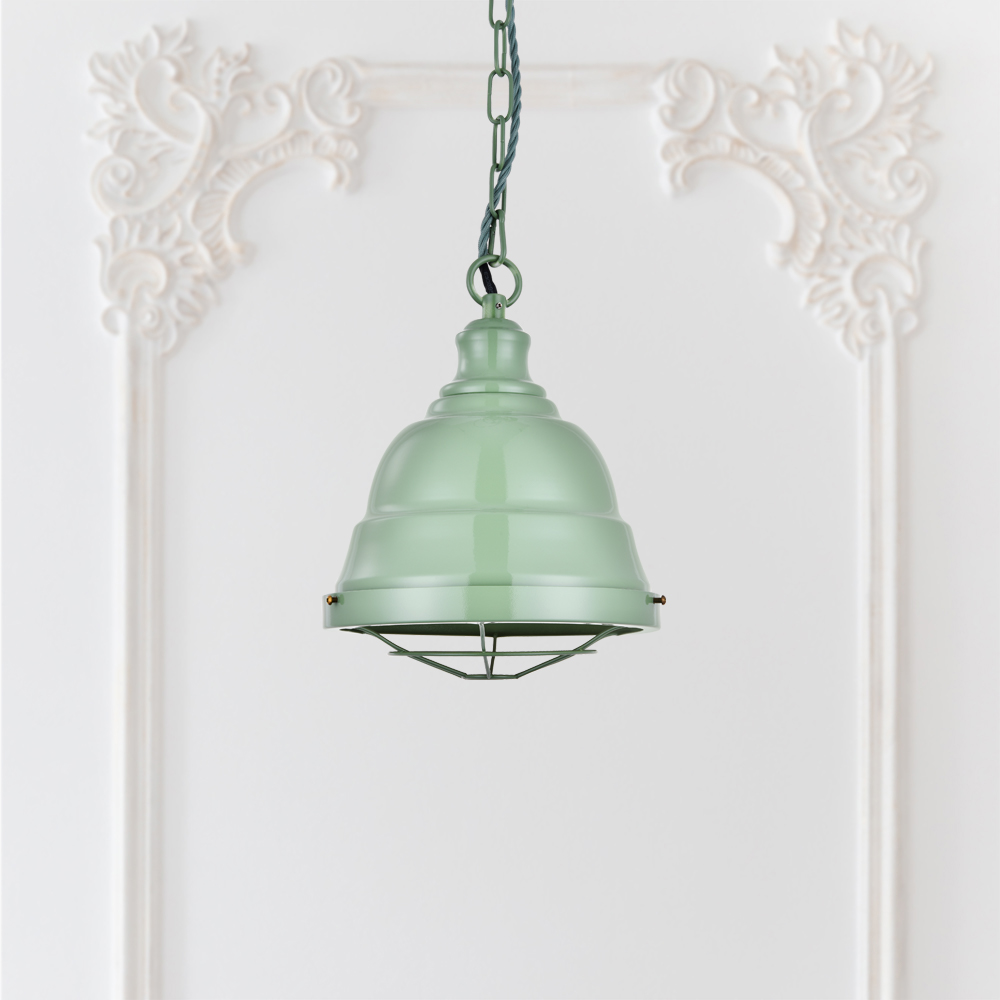
When it comes to choosing lighting fixtures for your home it can sometimes be a daunting experience. Where do you start? What lighting is required for different rooms? Will it suit my decor? What type of lighting do I go for?
There are many different considerations to make when choosing the right lighting fixtures for your home. The good news is that armed with the right information it can be a seamless buying experience.
This guide will help you to select the right type of lighting fixtures for your home.
Wall Lights
Wall lights are a great way of helping to divide up a room. In a hallway, wall lights are a great supplement to a ceiling or pendant light through layer lighting as they can help to create a much softer ambience.
Wall lights should not be overlooked, but instead used as a component with your other light fixtures.
In a small bedroom where space is limited, a wall light on either side of the bed would be a much better alternative than a lamp. In a bathroom they could be positioned on either side of a mirror as opposed to spotlights. The symmetry creates visual balance and provides better depth of lighting for the tasks that need it such as applying makeup and shaving.
Our luxury, stylish indoor wall lights come in a variety of finishes and shapes to suit multiple decors and situations. They can help to add character to any room.
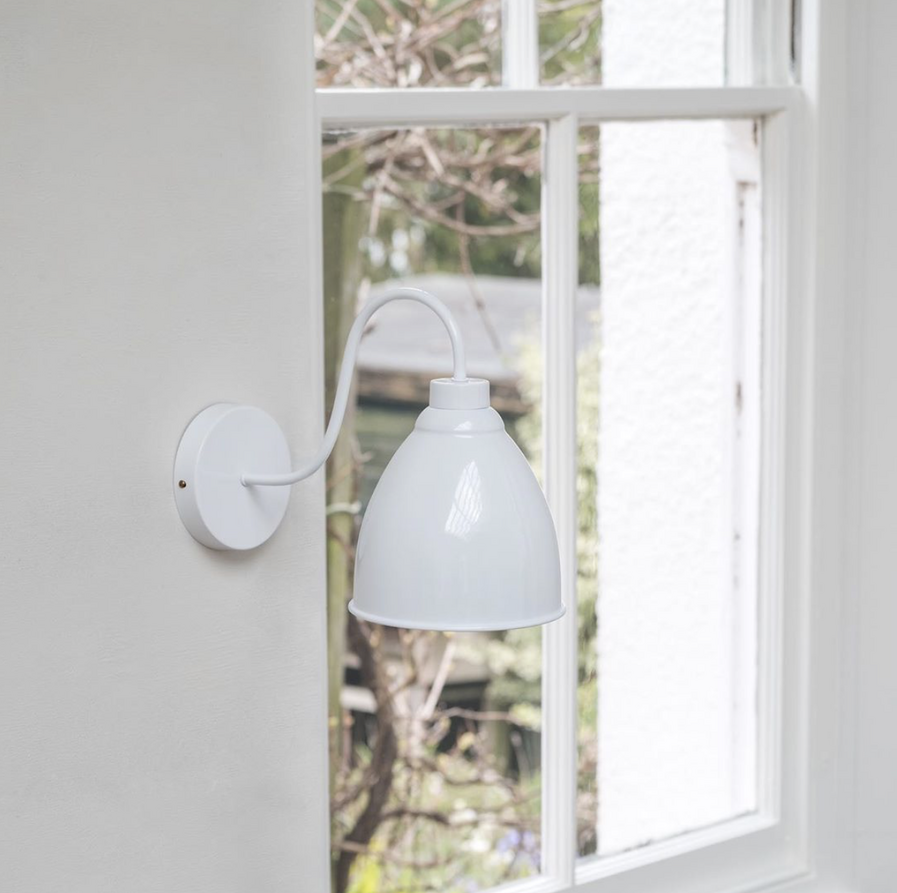
Ceiling Lights
If you're looking to make a statement, a stunning ceiling light will create a focal point and presence in a hallway. Whilst also helping to brighten up what can be a dark space in a home.
Ceiling lights are great alternatives to pendant lights in the bedroom for a main overhead light fixture.
But if you're looking to make a statement, then a chandelier is a ceiling light that will fill your chosen space with presence. Chandeliers come in a wide range of styles these days, so you can easily find one to suit your chosen space.
Downlights
Downlights are a fully versatile light fixture that can be used throughout a home. In kitchens, they're great for providing brightness for food prep areas.
All of our LED downlights are fire rated and have a front-facing CCT easy switch enabling you to quickly change between 3000K (warm white), 4000K (daylight white) and 6000K (cool white). This means you can change the level of light to suit your mood and requirements.
This is what makes downlights such an incredibly versatile and useful asset to any home.
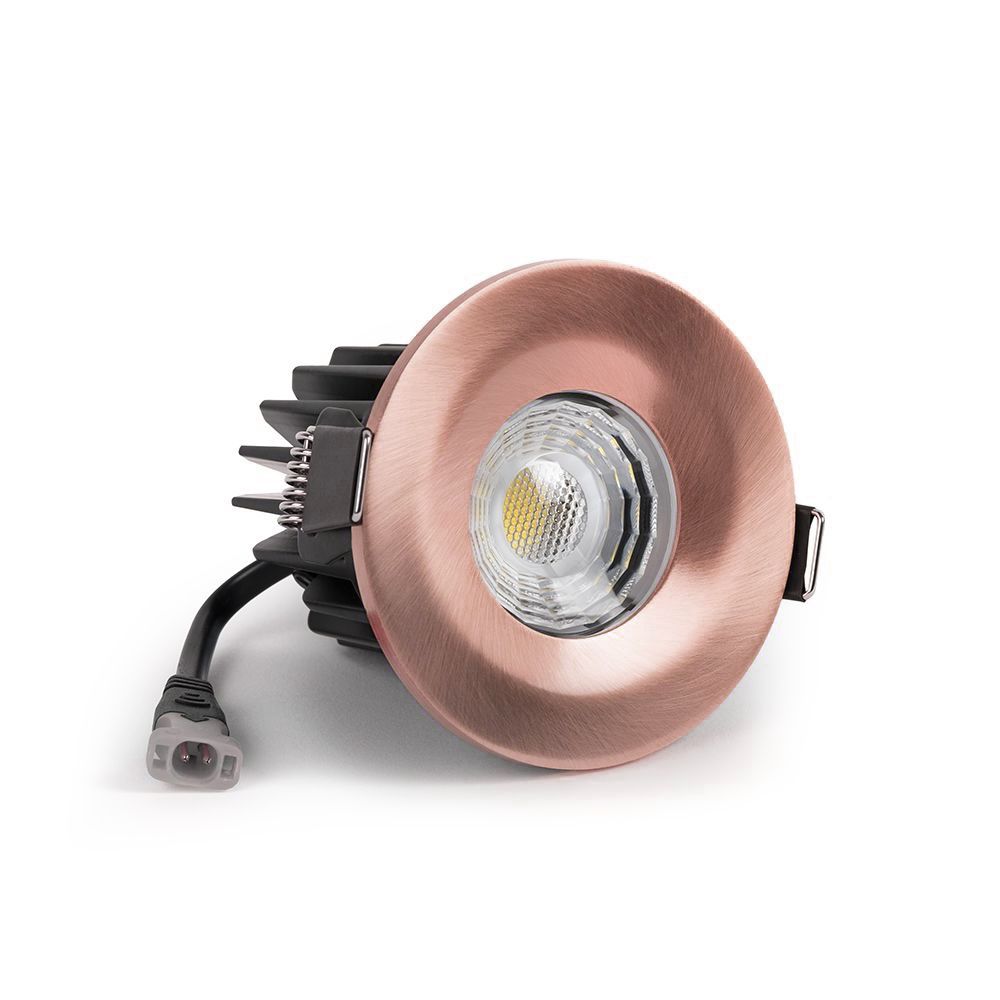
Pendant Lights
Pendant lights look great when grouped together in a kitchen or dining space. They work so well above breakfast bars or dining tables as they help to define the space. They can also provide excellent task lighting for areas that need it most, such as over a breakfast bar or dining table.
However, don't think pendant lights should just reside in the kitchen. Pendant lighting can add an unusual and gorgeous focal point in other areas you may not have considered.
Light up a reading nook, position them on either side of a bed in the bedroom, or over a coffee table. Whilst pendant lights work perfectly when hung above a target option, you can be creative with their positioning too.
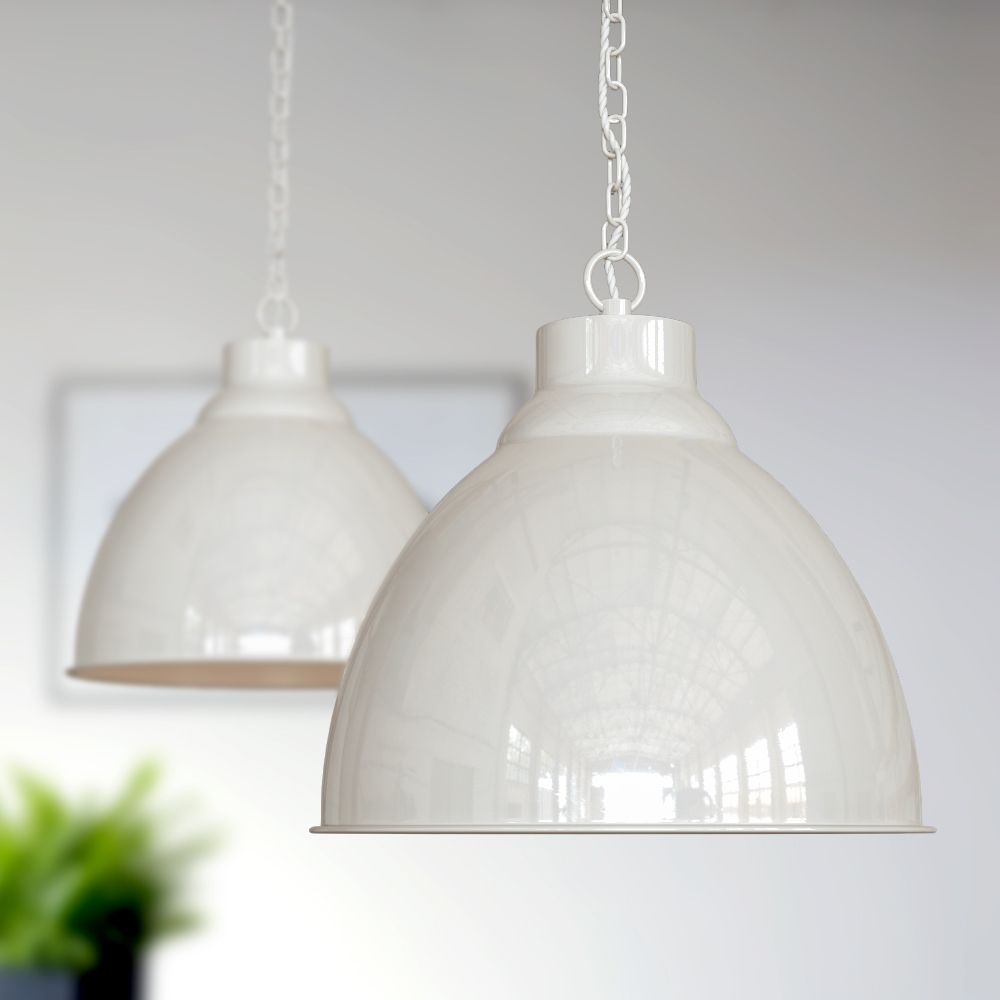
Outdoor Lighting
When choosing outdoor lighting you need to ensure that they are suitably IP rated. IP stands for Ingress Protection. An IP rating helps to advise how well protected the light fitting is against moisture and other foreign bodies such as dirt.
For outdoor lighting, you need to opt for lighting that is IP-rated 45 and above. This will protect the light from dirt, moisture, and weather conditions.
Wall lights are a popular choice for outdoor lighting, typically for entranceways, sheds and garden spaces. Our Hopkin Polished Solid Brass wall light is truly stunning. With an IP rating of 66, this vintage style light is perfect for adding ambience to your garden space. As it is also made from real solid brass, this light will not corrode when exposed to the elements. This is also a suitable light for bathrooms.
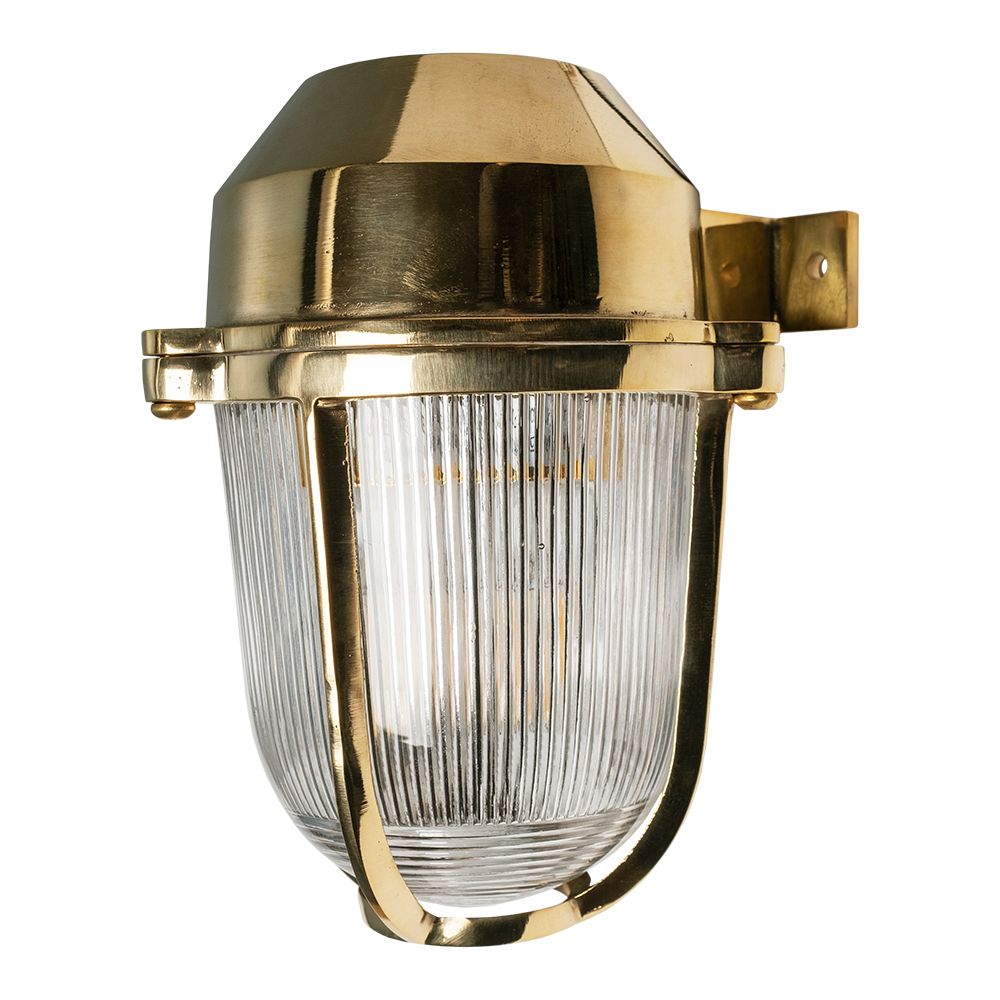
The right lighting fixtures can make or break a room. Our recommendations will help you to carefully consider your lighting options next time you have a revamp in your home.
[related_products is_auto_added="1"]When it comes to choosing lighting fixtures for your home it can sometimes be a daunting experience. Where do you start? What lighting is required for different rooms? Will it suit my decor? What type of lighting do I go for? There are many different considerations to make when choosing the right lighting fixtures for […]
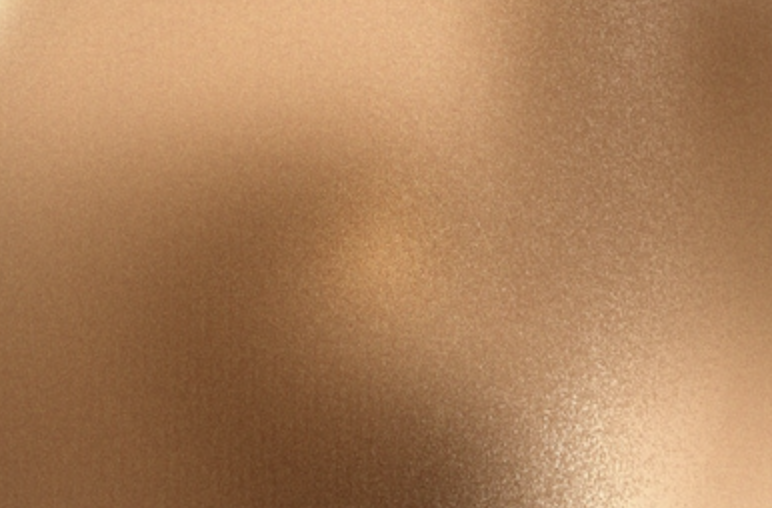
Traditionally composed of copper and tin, bronze is characteristically known for its dull, metallic gold colour. This metal is a beautiful addition to a home when used wisely. Just like copper, when used sparingly it can look classic and understated in the home.
By way of an example, in a kitchen, a classic way to incorporate metals such as bronze is with tap fittings, sockets and switches, and lighting. Bronze downlights add a subtle touch of class without being overbearing.
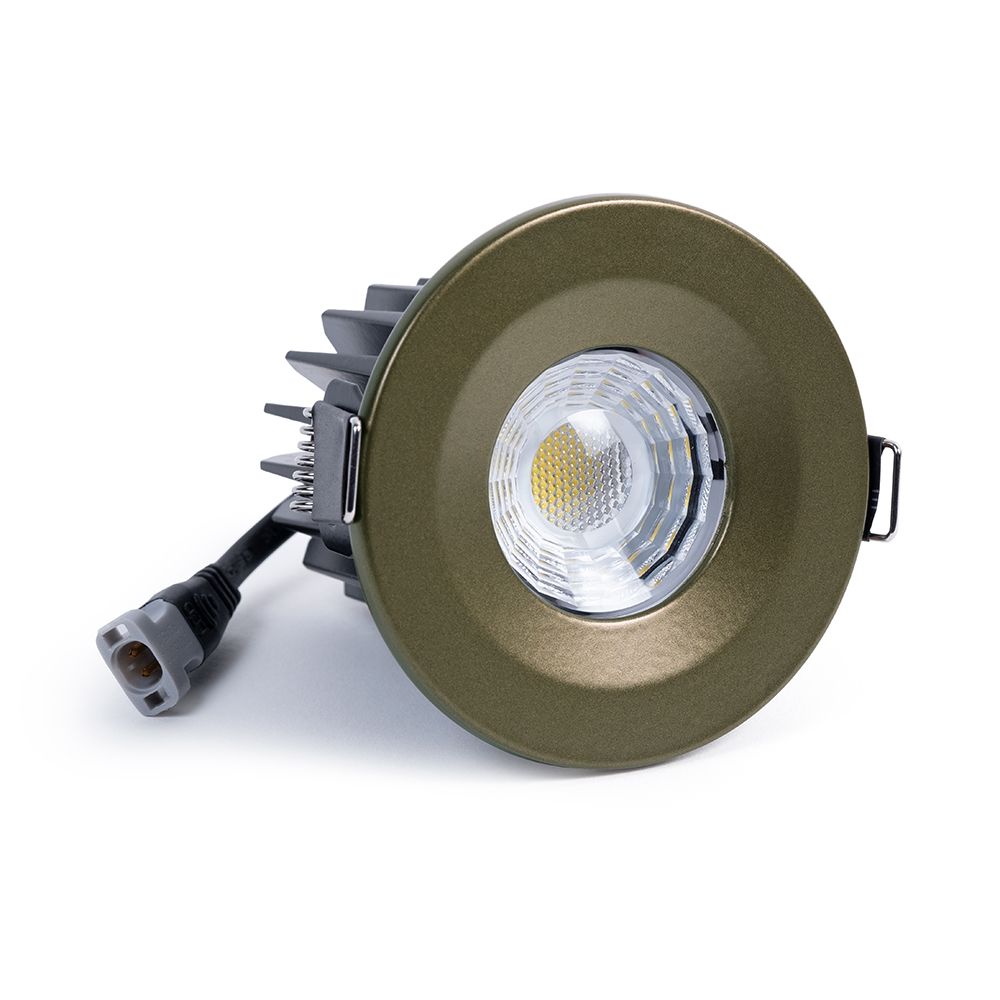
Bronze can be combined efficiently with a number of different colours. Generally speaking, it is a perfect match for white and ivory, this is known as a classic combination for weddings. Whilst neutrals pair the best with this eye catching metal, it's definitely not one to shy away from if you're looking to incorporate darker colours into your home.
What Colours Go Well With Bronze?
Bronze fixtures are definitely not a one size fits all when it comes to colour. Pair it with the wrong colour and it can become an eye-sore. Pair it with the right colour and it can completely transform the interiors of your home.
White & Ivory
As previously mentioned, white and ivory are a match made in heaven for bronze, and a traditional colour scheme that is commonly adopted for weddings.
This can look beautiful in a kitchen space where cabinetry is white, with bronze accents dotted throughout the kitchen, through handles, lighting and sockets and switches.
However, neutrals as a whole work incredibly well with this versatile metal. Next to a pure white object, the underlying brown and gold tones in bronze will jump out. This is why it's important to use this metal sparingly.
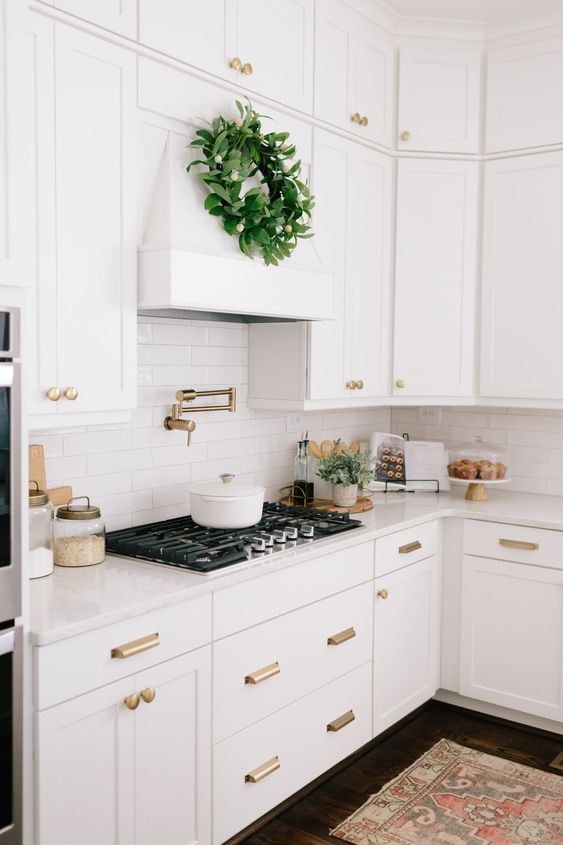
Image: Pinterest
Black & Charcoal
But you don't always need to play it safe... Be daring with darker hues such as black and charcoal and they will complement the metals glint for visual clout.
We are seeing more adoption of these darker colours in living room and office spaces for a bold look that can be dressed up and finished to perfection with metals such as bronze. Commonly adopted through cabinetry handles and decorative elements such as ornaments and vases.
Teal
It's one of those, so wrong, but so right combinations. Don't knock it until you've tried it! A blue-green shade, teal pairs wonderfully. Especially when interwoven through wallpapers.
The orange hues of bronze work perfectly with both teal and brown as pictured below.
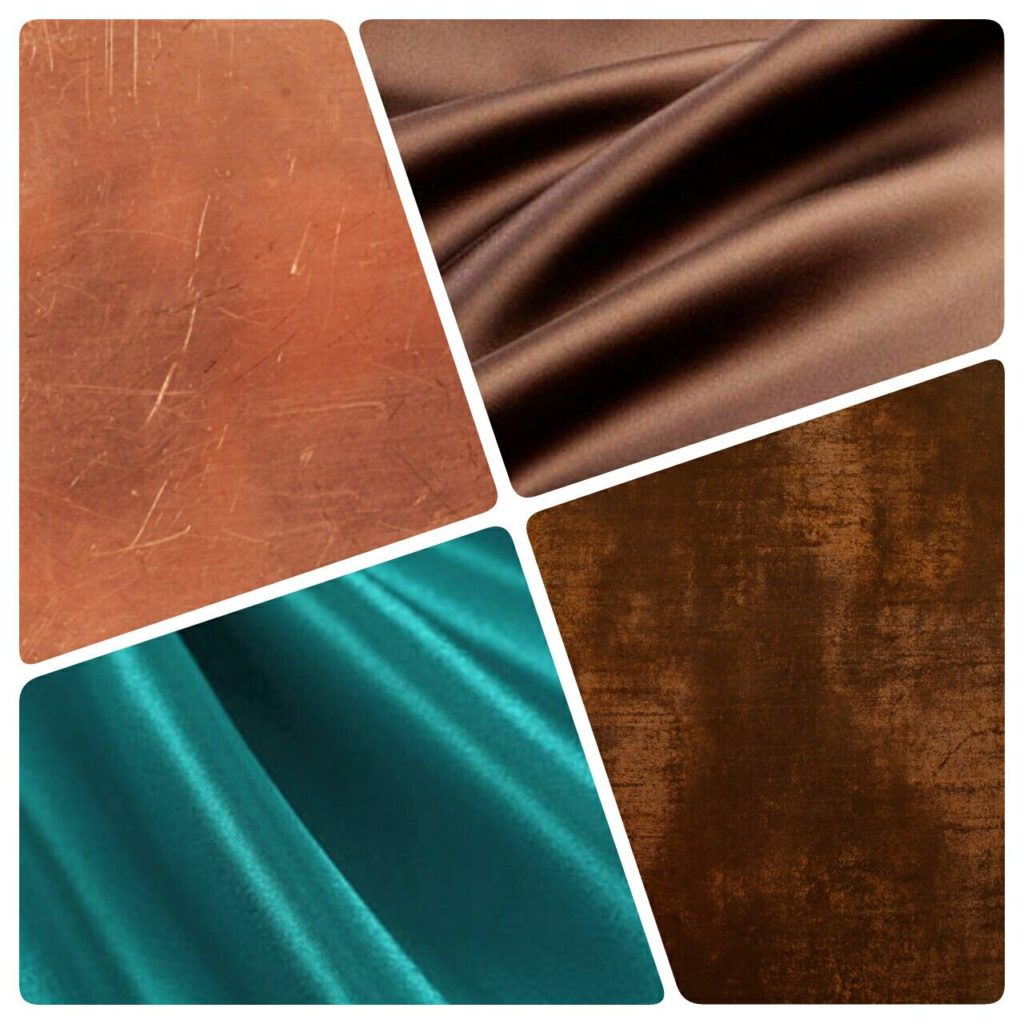
Image: Pinterest
Bronze & Brushed Brass
How about mixing metals? All design rules are thrown out of the window when it comes down to this duo.
Mixing metals and finishes can be a fabulous enhancement to an exciting interior when done with tight precision. You should only mix 2-3 types of metals and choose one dominant metal type. This dominant metal type will probably already be in use throughout your home by way of lighting, switches or kitchen accessories.
Still not sure? You can see the fusion of these two metals in our brand new bronze and brushed brass range of sockets and switches.
As you can see, the result is a sumptuously rich, dark finish for a classic and elegant finish.
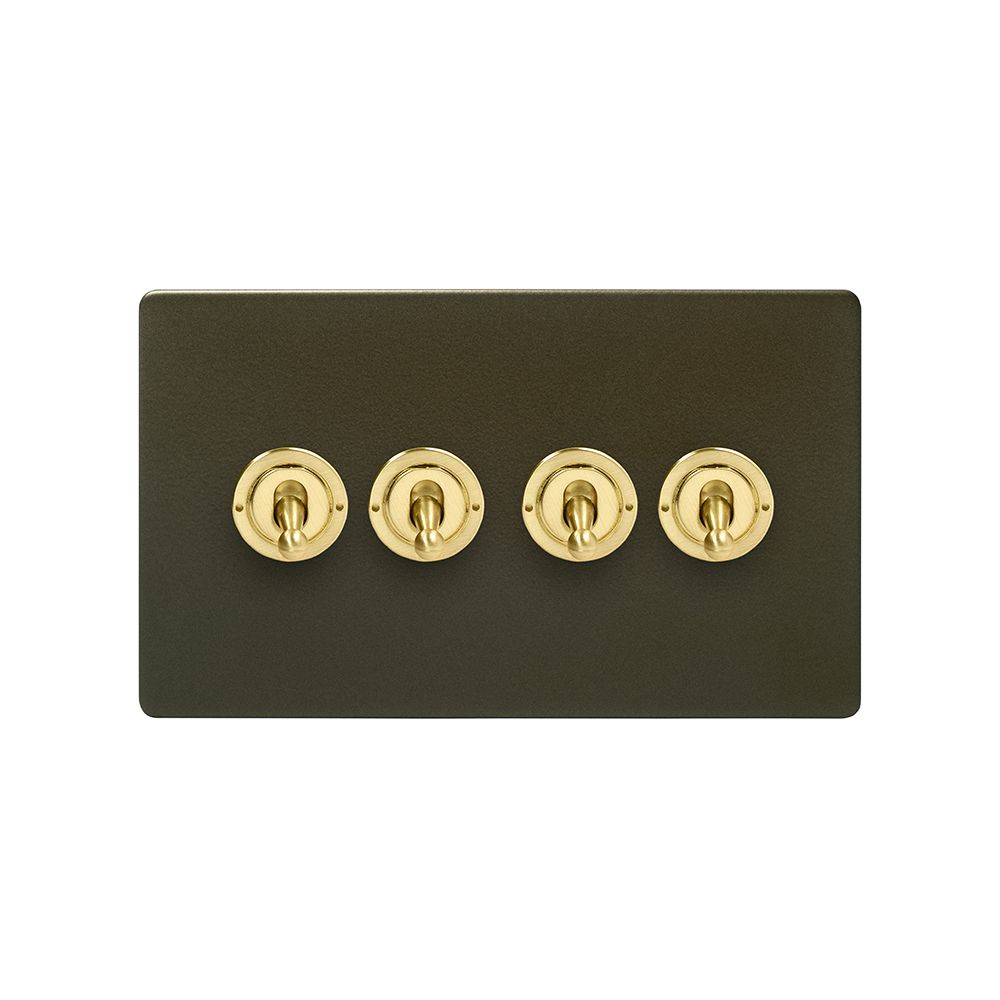
Dark Green
Dark green is another colour on the rise in popularity. Especially when used as a feature wall in a living or dining room.
Dark green works seamlessly with bronze as the green brings out the subtle shine of the metal. Mossy or forest green shades are highly desirable with bronze as they take their cue from nature.
Burgundy
Bronze with reddish hues work perfectly with deep red colours such as burgundy.
Not as commonly seen throughout home interiors, burgundy and bronze are depicted as a classic Christmas combination throughout decorations.
Bronze can make a home when mixed subtly and sparingly. Wondering how you could also work copper into your home? Take a look at our what colours go with copper blog for more inspiration.
[related_products is_auto_added="1"]Bronze is a fantastic metal to use sparingly in your home for maximum impact. We discuss what colours go well with bronze in your interiors.

LED lighting continues to play a huge part in reducing the carbon footprint of the UK and the rest of the world.
It has been growing in popularity year on year due to their environmental impact and all of the other benefits that LED lighting can bring to your household.
However, there is much more to LED lighting that should play a deciding role when you next select the lighting for your home.
What is LED lighting?
LED lighting has been hailed as the lighting choice of the future. There's no surprise with the many environmental and cost savings that can be accumulated over time.
LED stands for light emitting diode. LED lighting can produce up to 90% more efficiently than your traditional incandescent light bulbs.
The way that LED bulbs produce the light itself is also very different to those that are just classed as 'energy saving bulbs'. Light is produced in an LED bulb when an electrical current passes through a microchip. This then illuminates the tiny light sources known as LEDs.
What Are The Pros of LED Lighting?
Environmental
On a large scale, LED lighting provides a huge environmental impact on the world we live in.
According to studies, reported by the BBC, making products more energy efficient makes a positive impact in cutting CO2 emissions and, along with other factors has been more effective than renewable energy.
In addition to this, fewer LED bulbs need to be produced because they last that much longer than their counterparts so do not need to be replaced as often. Less is more when it comes to helping the environment. As fewer LED bulbs are needed this means, less packaging, less manufacturing and less transportation. Every little bit really does help.
Energy efficient
LED is a highly efficient lighting source if you hadn't guessed it already. LED lighting can use up to 70% less energy than traditional bulbs.
The main reason LED lighting uses less energy is because they produce light in a different way to other lighting sources. Incandescent bulbs pass electricity through a filament that needs to be extremely hot for its atoms’ and electrons to produce light. For this reason, most incandescent bulbs waste about 90% of the electricity they consume as heat, this makes them incredibly inefficient light producers.
Long Life
A massive pull of using LED lighting is their long life. As pictured below, there is a huge jump in the average lifespan from LEDs traditional counterparts.
Offering 25,000 + hours for their average lifespan, LED is undoubtedly the leader in the future of lighting.
For example, if an LED bulb was used for 6 hours a day (much more than the average daily usage), then your LED bulb would last for a whopping 7.6 years without the need to be changed. In comparison to a standard incandescent bulb which would only last for 3 months!
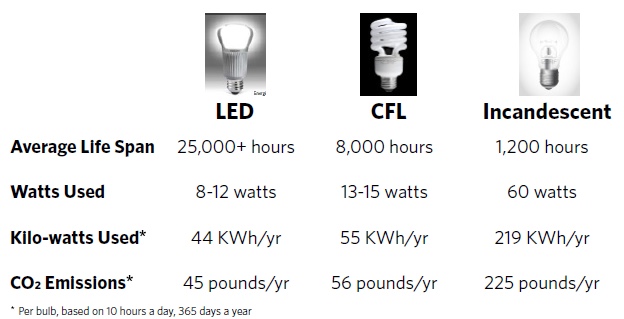
Save Money Over Time
Due to the long lifespan of an LED bulb, joint with not having to worry about changing the bulbs so often, you can enjoy the cost savings over time too.
But because LED bulbs use far less energy in comparison... LED saves over 70% of energy vs traditional incandescent or halogen lighting. This reduces your energy usage which also means, you make savings on your overall energy costs too.
Less energy, less costs and much fewer purchases of bulbs.
What Are The Cons of LED lighting?
Initial Cost Is Higher
It could be said that a major drawback of LED lighting is that the initial cost is higher. The reason being is because LED bulbs are more complex than halogens, both the technology employed into the bulb and manufacturing process.
Having said this, the price of LED light bulbs is falling year on year due to their high demand.
Not Always Dimmable
LED lighting can pose possible compatibility issues with your existing dimmers when retrofitting. This is because they are dimmed in a different way to traditional bulbs. However, this is more of an issue with more generic, off the shelf LED bulbs.
All of our bulbs at Elesi are fully dimmable so will not pose any problems with your setup.
They Can Look Ugly
The classic, plastic based LEDs are not the most aesthetically pleasing. This can be a problem when used in lighting where the bulbs are exposed.
At Elesi, we offer an extensive range of LED bulbs that definitely won't cause an eyesore in your interiors. From golfball, teardrop to candle bulbs, there is so much more advancement and availability for LED bulbs nowadays.

Dimmer Incompatibility
There have been reported issues of LED bulbs flickering. The main culprit for this is dimmer incompatibility. This has been more of an issue with old style dimmers, it is better to use trailing edge dimmers where possible.
LED lighting still remains the main player in the way we choose to light our homes nowadays. They're good for the environment and those purse strings too!
FAQs
All of our dimmers are Trailing Edge dimmers, and many of them can be switched between Leading Edge and Trailing edge with a simple click of a button.
LED lighting continues to play a huge part in reducing the carbon footprint of the UK and the rest of the world. It has been growing in popularity year on year due to their environmental impact and all of the other benefits that LED lighting can bring to your household. However, there is much more […]
